Arts & Entertainment
Best of the books
LGBT themes liberally peppered through slated fall releases
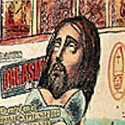
Books, much cheaper than movies or TV shows to produce, provide the most copious bounty of LGBT options. Among the highlights:
If you want something that’s going to last you most of the winter, try “Black Like Us: A Century of Gay, Lesbian, and Bisexual African American Fiction,” compiled by Don Weise (Cleis Press, October). This brick of a book gathers the works several of your favorite authors, some of whom you might not know are gay. This is the kind of book you can get lost in and at 555 pages, you’ll be lost a while.
“The Unreal Life of Sergey Nabokov” by Paul Russell (Cleis Press, November) is based on the real life of the gay brother of Vladimir Nabokov and tells the fictional story of Sergey’s life, his contemporaries, his loves and his heartbreaking end in Berlin. You’ll also want to check out “History’s Passions: Stories of Sex Before Stonewall,” edited by Richard Labonte (Bold Strokes Books, November). This anthology, written by four award-winning authors, imagines the lives of loving men in various historical settings.
For young adult readers, check out “Swimming in Chicago” by David-Matthew Barnes (Bold Strokes Books, October). In this novel, a young man is dealing with his mother’s suicide with the help of his best girl friend and an intriguing new love.
Another book for teens is “Speaking Out: LGBTQ Youth Stand Up” by Steve Berman (Bold Strokes, September). In this book, young adults will read stories of adversity overcome, problems solved, issues brought forth, and what they can look forward to.
In “The Stranger’s Child” by Alan Hollinghurst (Knopf, October), it’s 1913 and a young man has brought a love interest home with him from boarding school, only to have his sister fall for the boy, too. But with a few innocent words in an autograph book, secrets are buried shallowly and the young man and his entire family are changed for several generations. This is one of those sweeping novels that you’ll want to save for a rainy weekend day.
“Tom of Finland – Life and Work of a Gay Hero” by F. Valentine Hooven III (Bruno Gmunder Verlag Gmbh, November), a compilation, looks at Tom’s drawings from the earliest to more current times, and includes a biography. And if photography is the art you love most, check out “Jim French Diaries: The Creator of Colt Studio” by Jim French (also from Bruno Gmunder Verlag Gmbh, October).
You’ll also love paging through “Gay in America,” portraits by Scott Pasfield (September, Welcome Books). In this gorgeously illustrated book, you’ll find intimate and personal photography of gay men from around the country, taken over three years.
“Christmas Remembered” by Tom Mendicino, Frank Anthony Polito, and Michael Salvatore (Kensington, September) is a three-story collection that brings back memories of holidays shared, holidays cherished and holidays best forgotten.
“Second You Sin” by Scott Sherman (Kensington, September) is a thriller-whodunit, in which part-time sleuth/call boy Kevin Connor must solve the murders of several New York City male prostitutes.
Another mystery you’ll love this fall is “Hell’s Highway” by Gerri Hill (Bella Books, December). Someone thinks California’s Mojave Desert is the perfect place to dispose of women’s bodies. On the case are FBI Agents Cameron Ross and Andrea Sullivan, two women who are more than just partners at work. Can their commitment to each other withstand the sand, the heat, and the mind of a diabolical killer?
One comic book that stands out is “Heroes with Hardons” by Patrick Fillion and others (Bruno Gmunder Verlag Gmbh, November). This book is packed with super-hunky superheroes ready to save your day any way they can. Yes, these are comics, but they’re nothing like the ones you spent Saturday afternoon reading when you were a kid.
“Model Men: Gay Erotic Stories” by Neil Plakcy (Cleis Press, November) imagines the lives and loves of models from Mr. May in the hunk calendar to the billboard hottie who almost makes you wreck the car.
“Riding the Rails: Locomotive Lust and Carnal Cabooses” by Jerry L. Wheeler (Bold Strokes, December) explores the carnality trains tend to inspire.
“The Gay Gospels: Good News for Lesbian, Gay, Bisexual and Transgendered People” by Keith Sharpe (O Books, John Hunt, September) guides readers with a spiritual, faith-based (yet readable) look at the Bible, the arguments used against gays and why some feel these scriptures have been distorted.
“The Gay Men’s Guide to Timeless Manners and Proper Etiquette” by Corey Rosenberg (Chelsea Station Editions, September) explains what eating utensils to use, the difference between black tie and formal, what kind of hostess gift is mandatory and more.
“Best Gay Erotica 2012,” edited by Richard Labonte with a foreword by Larry Duplechan (Cleis Press, December) is an anthology that brings together the best of this years’ writers. Also look for “Best Lesbian Erotica 2012, edited by Kathleen Warnock, foreword by Sinclair Sexsmith, also from Cleis and out in December.
“69 Positions of Joyful Gay Sex” by Mischa Gawronski (Bruno Gmunder Verlag Gmbh, November) shows that, yes, indeed, there are lots of ways to do the deed.
Keep in mind that release dates are approximate and could change.
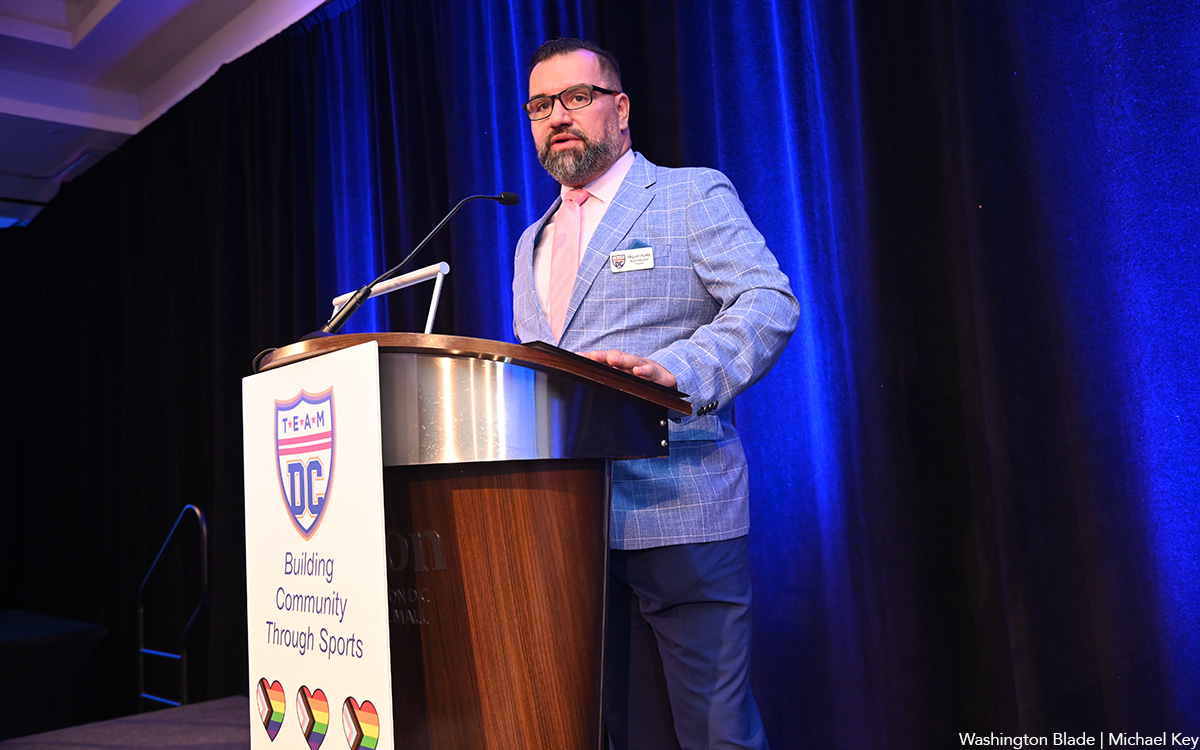
Team DC, the umbrella organization for LGBTQ-friendly sports teams and leagues in the D.C. area, held its annual Night of Champions Awards Gala on Saturday, April 20 at the Hilton National Mall. The organization gave out scholarships to area LGBTQ student athletes as well as awards to the Different Drummers, Kelly Laczko of Duplex Diner, Stacy Smith of the Edmund Burke School, Bryan Frank of Triout, JC Adams of DCG Basketball and the DC Gay Flag Football League.
(Washington Blade photos by Michael Key)
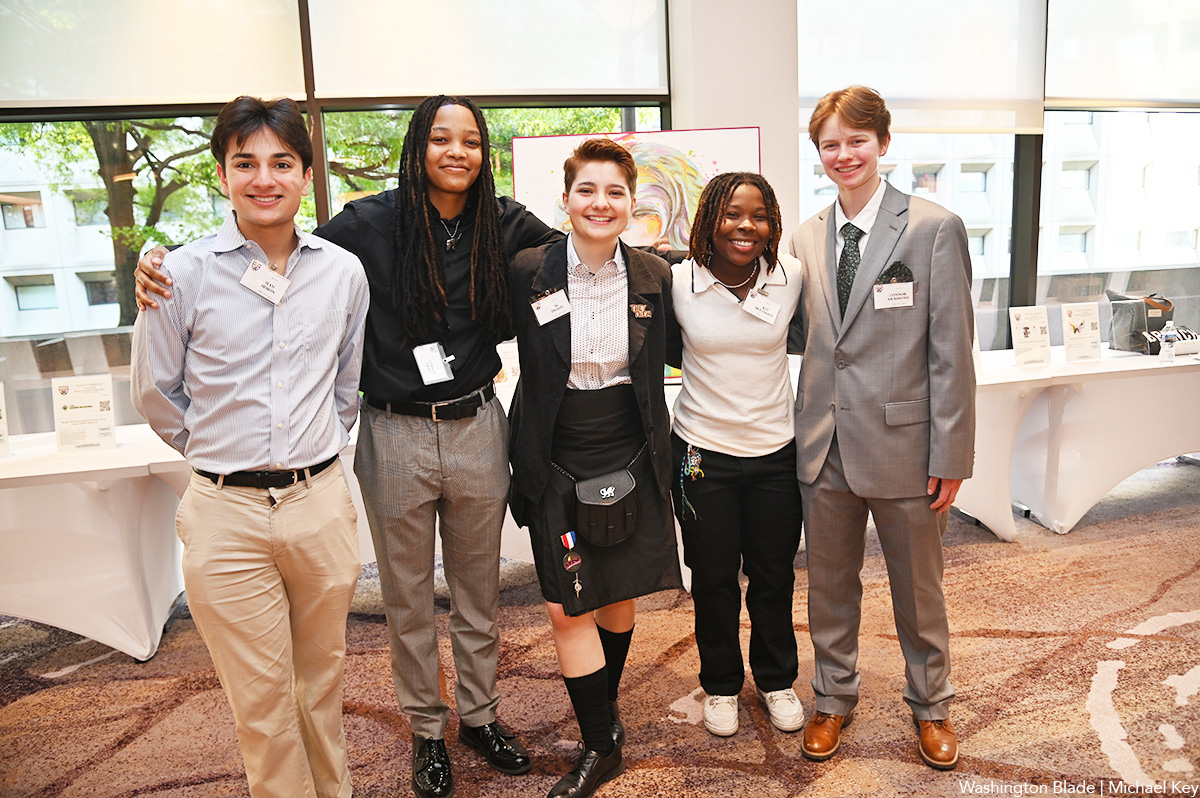
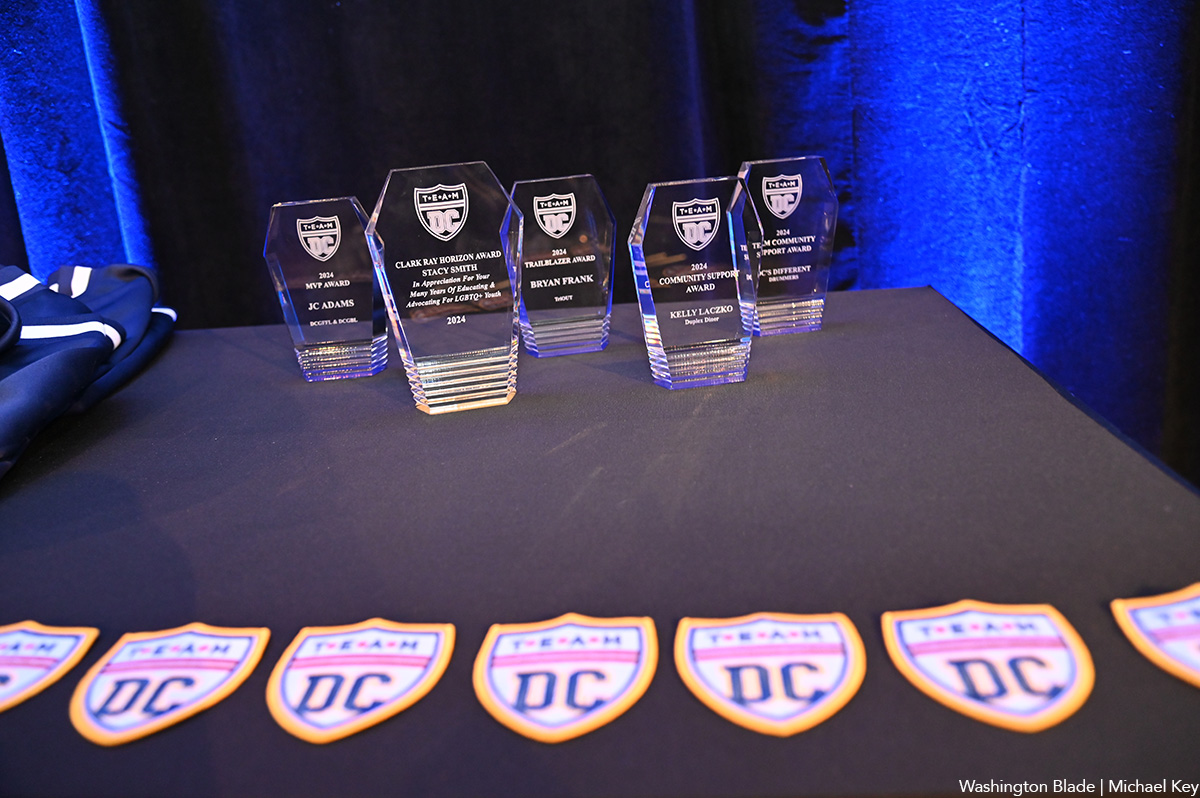
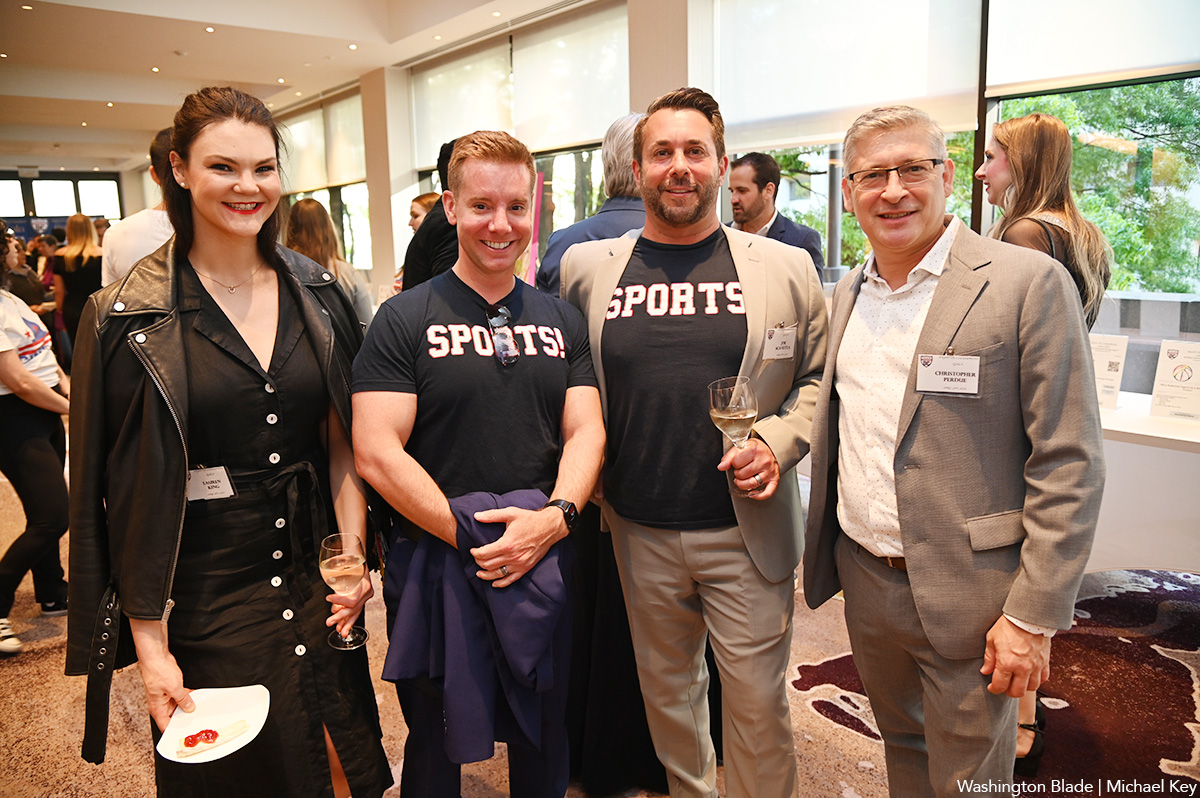
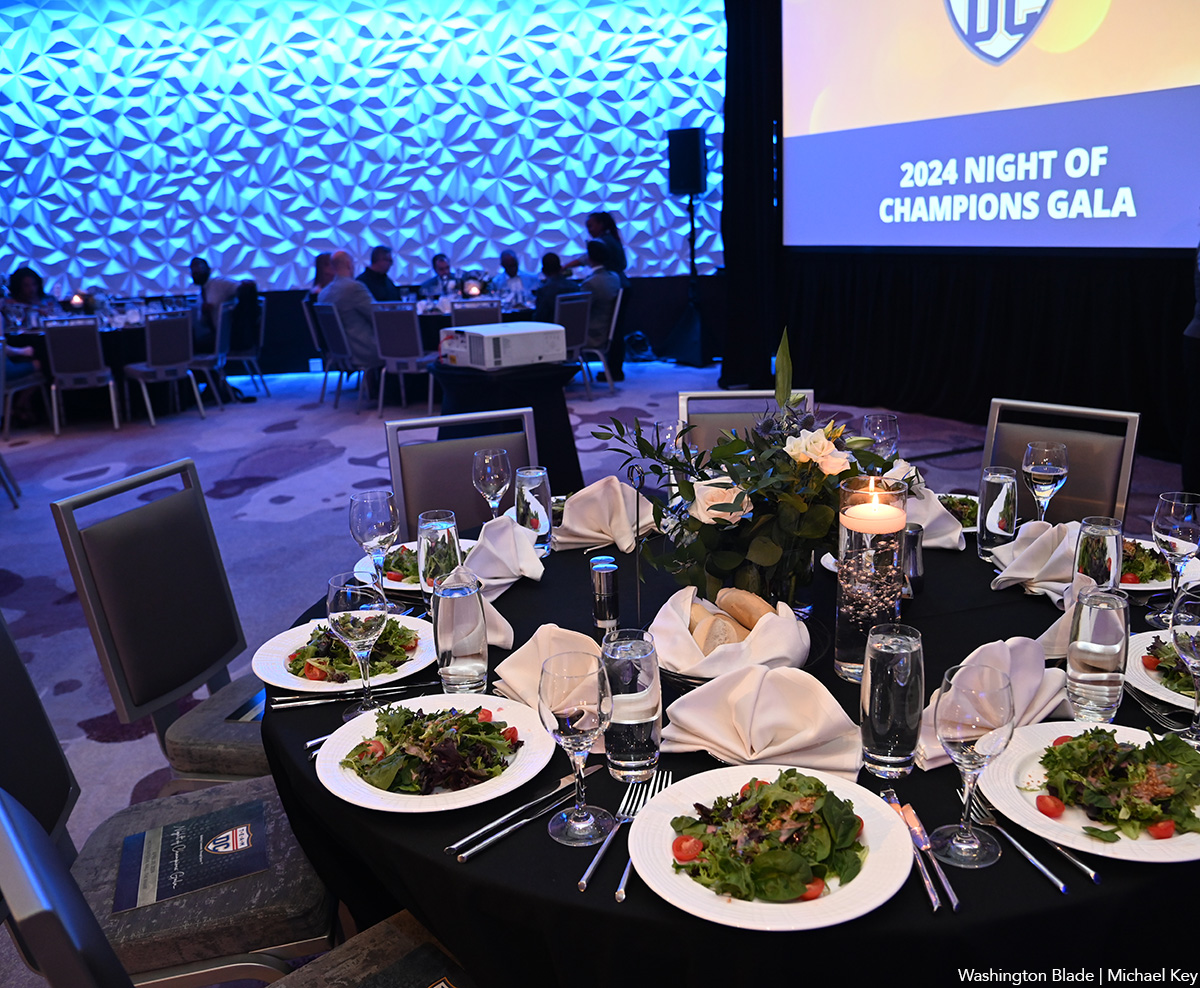
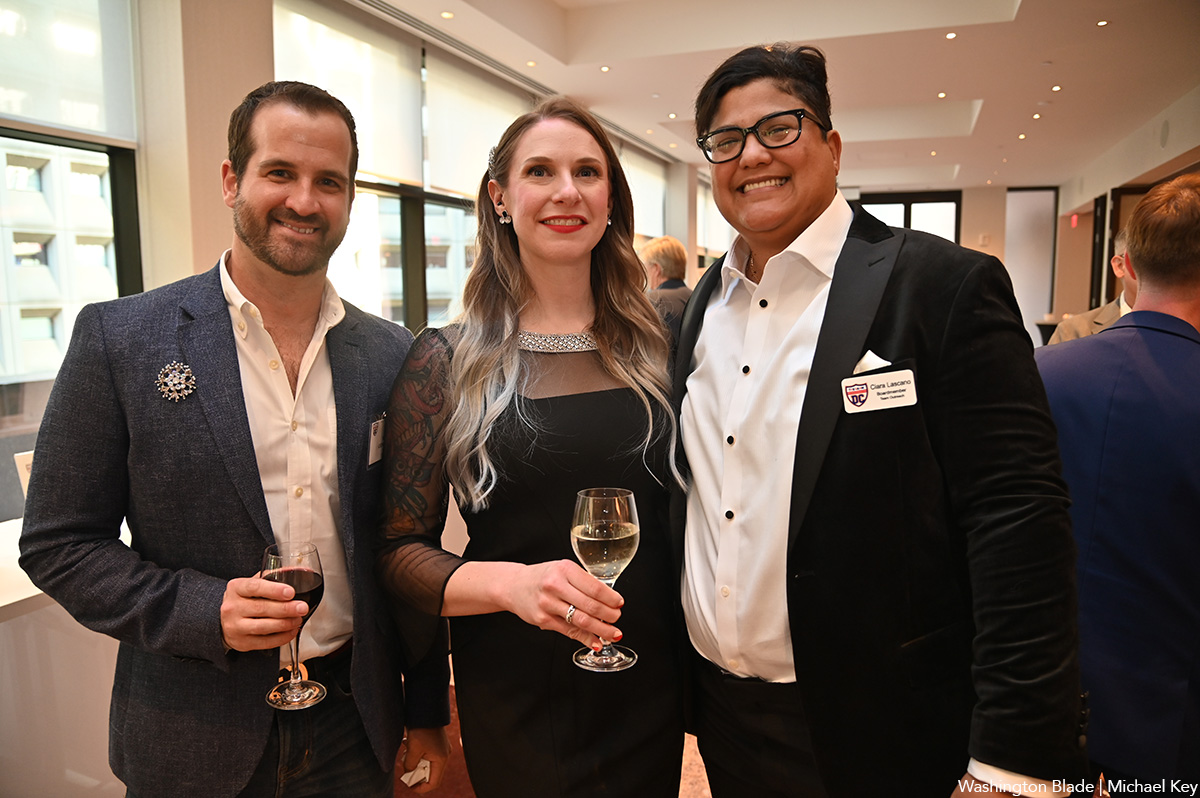
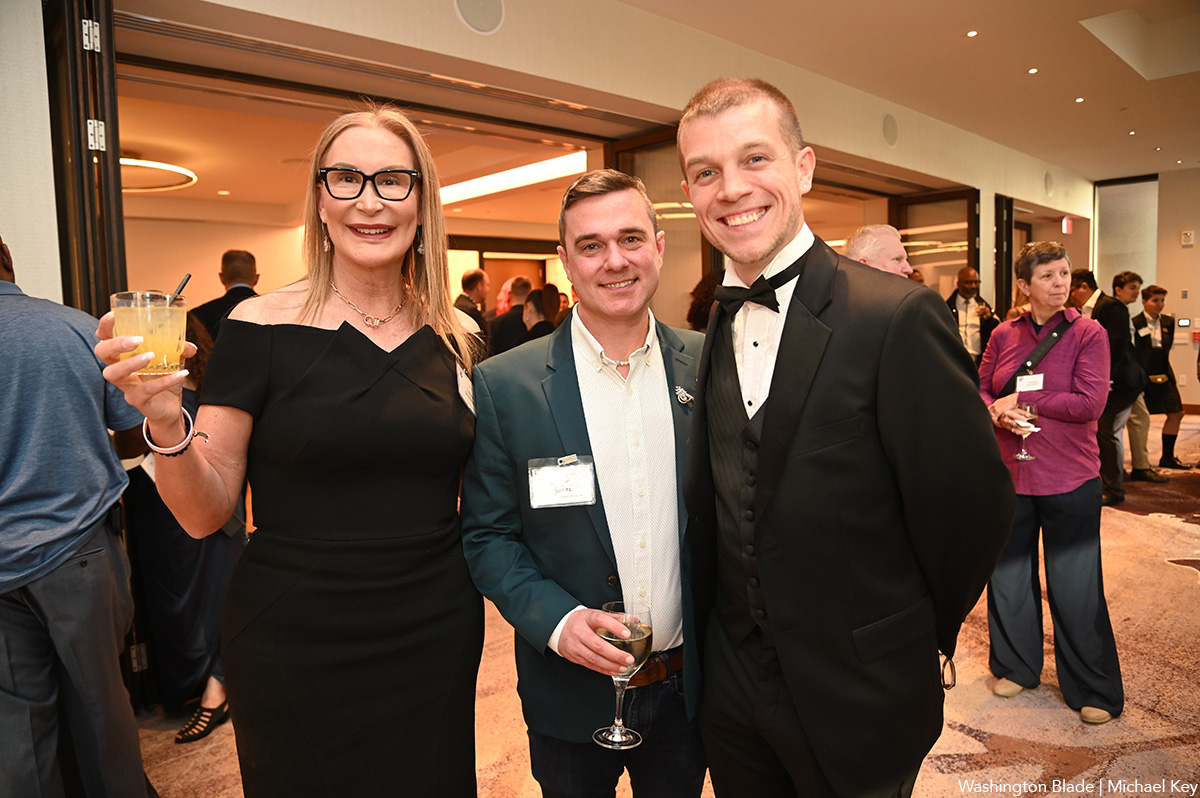
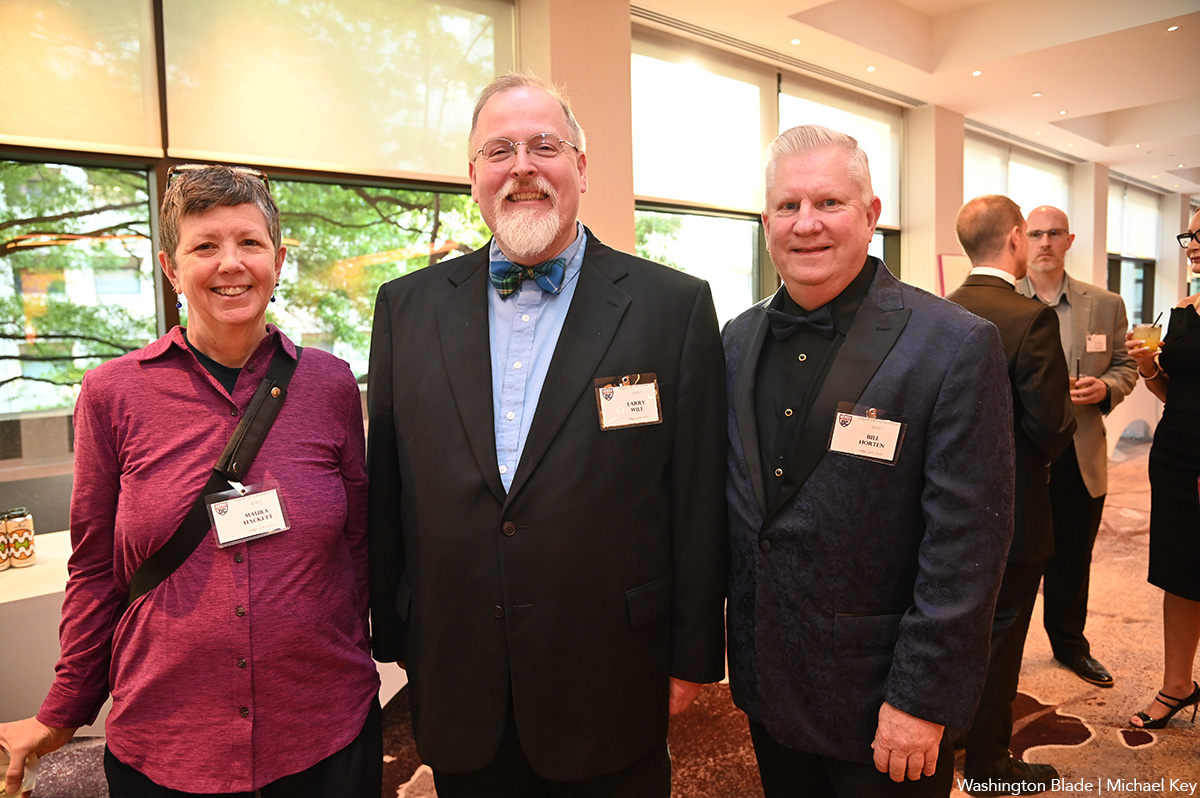
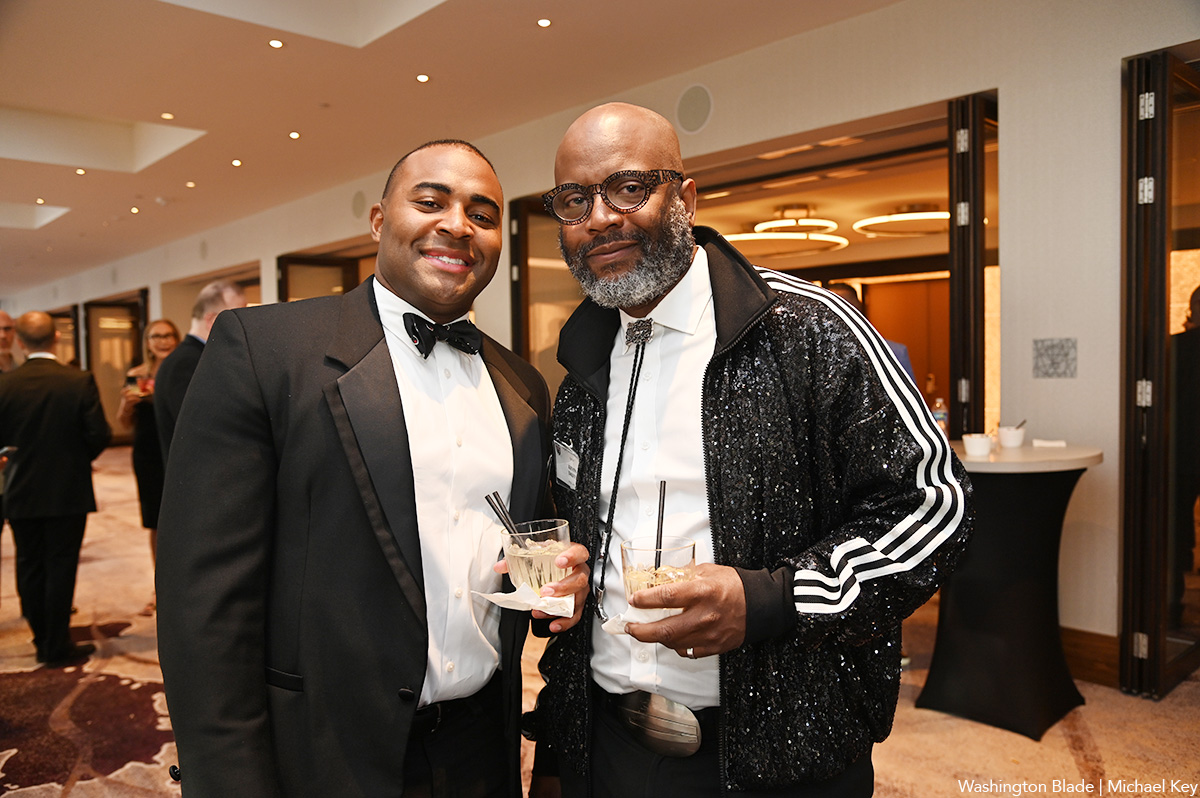
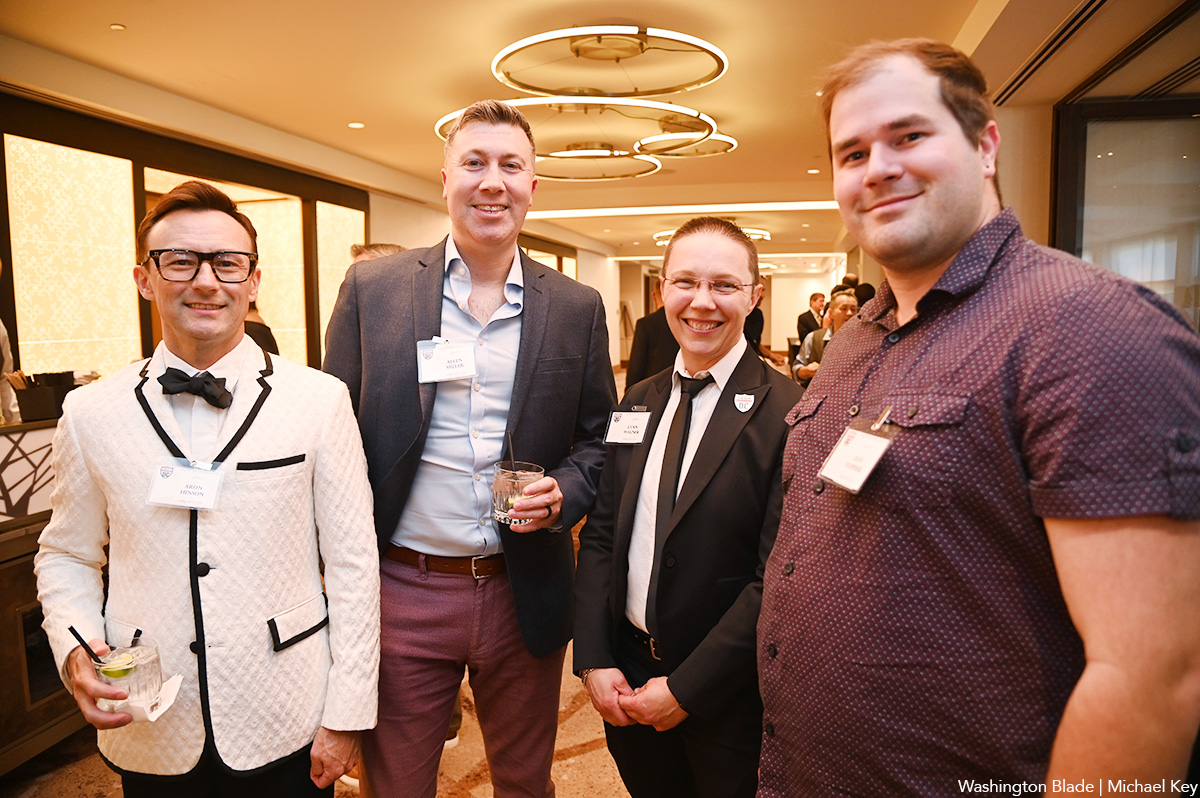
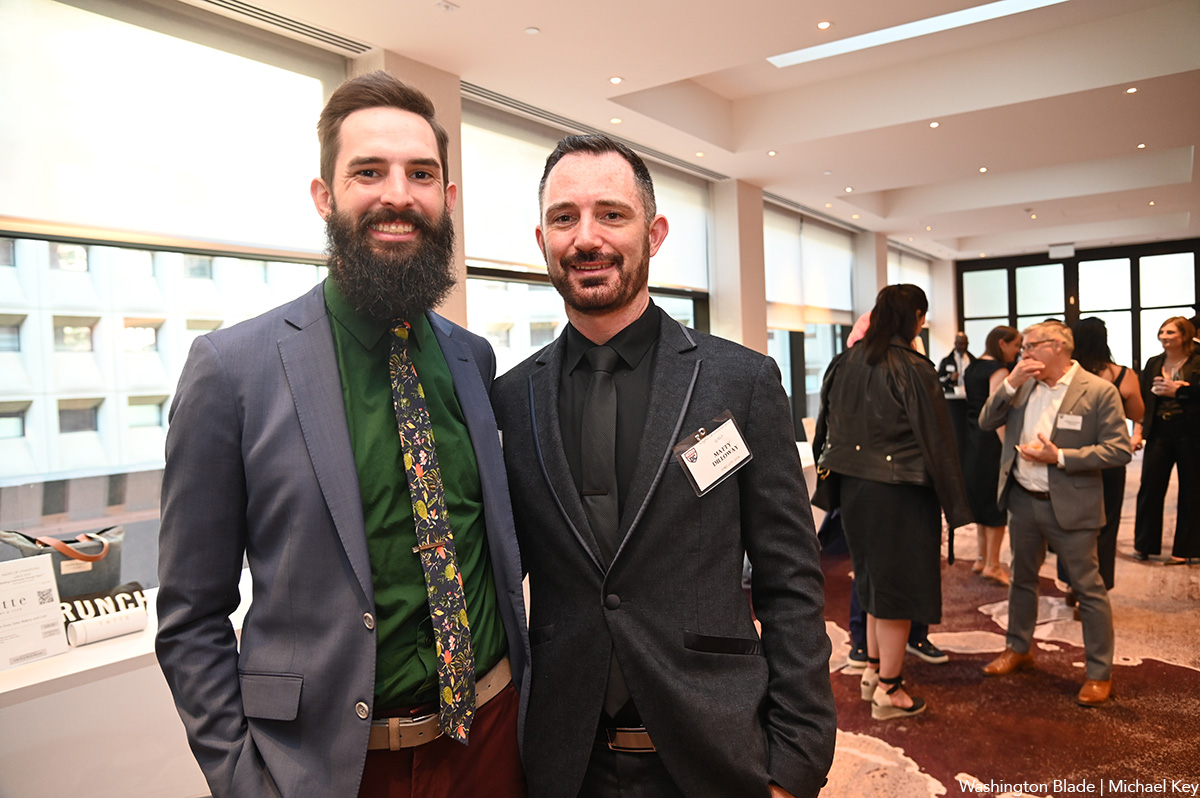
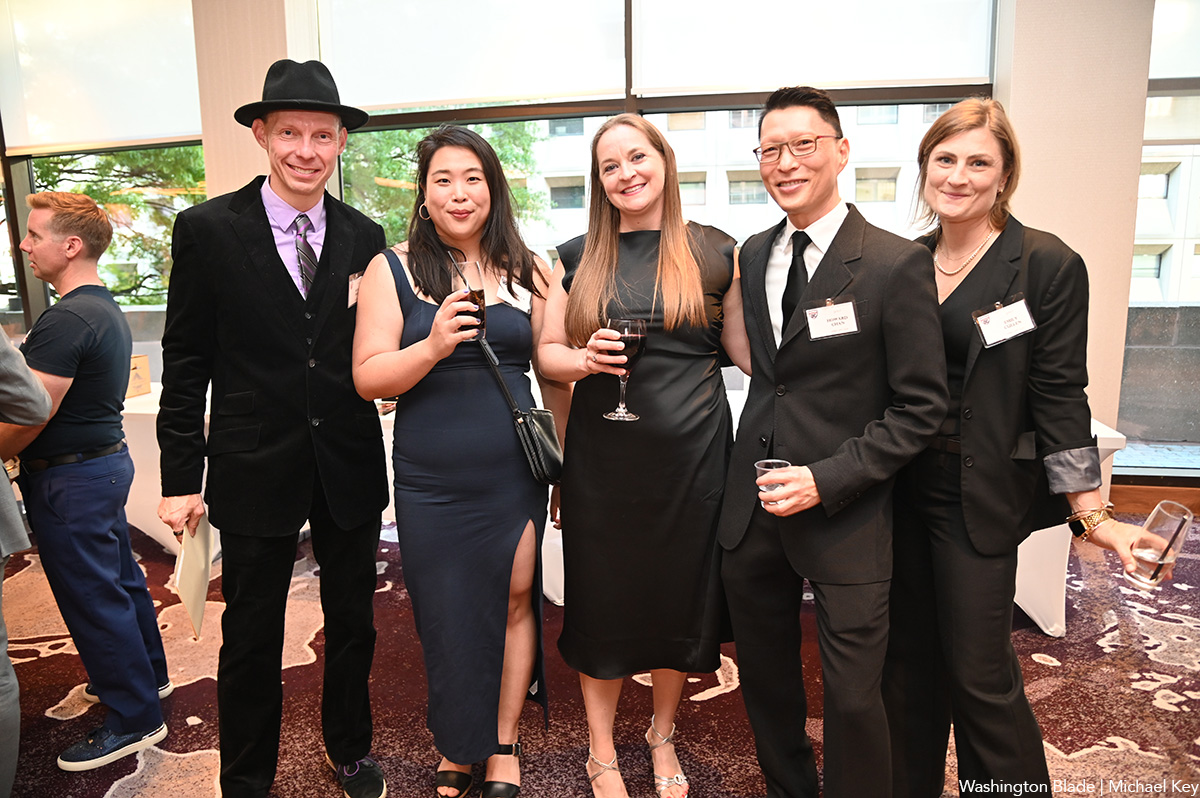
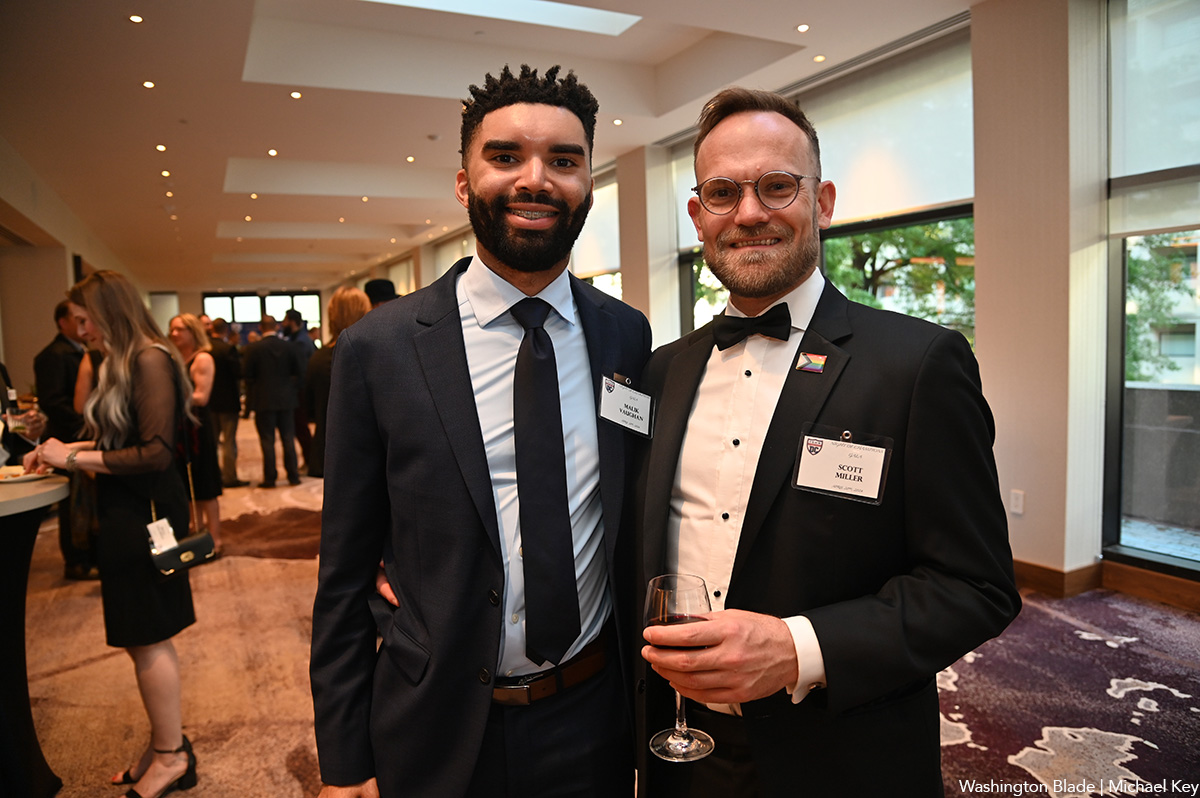
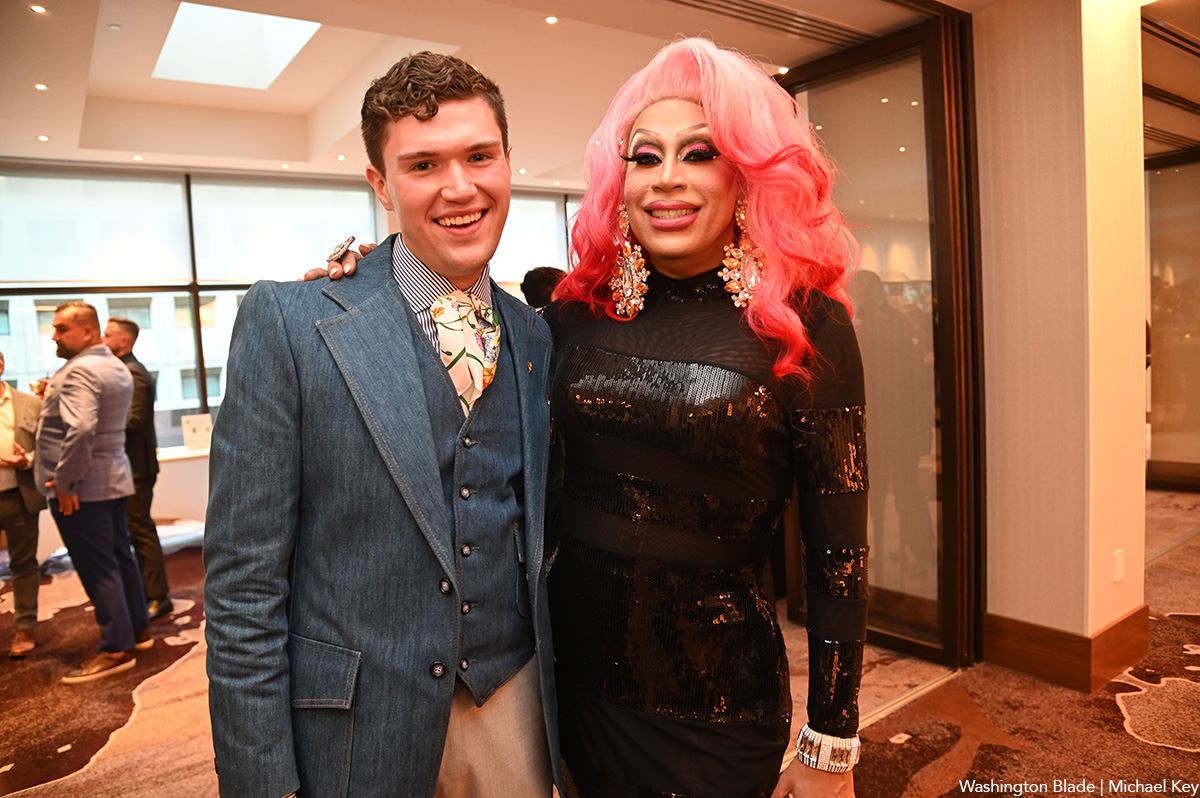
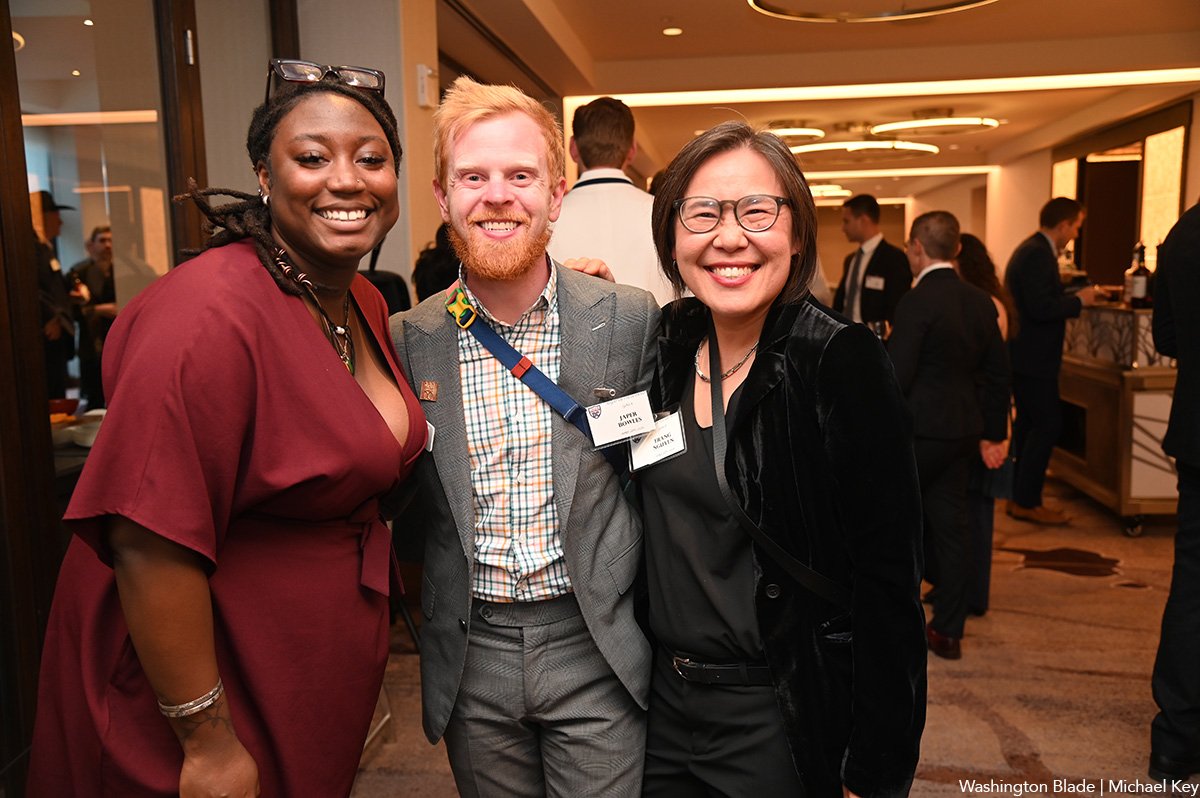
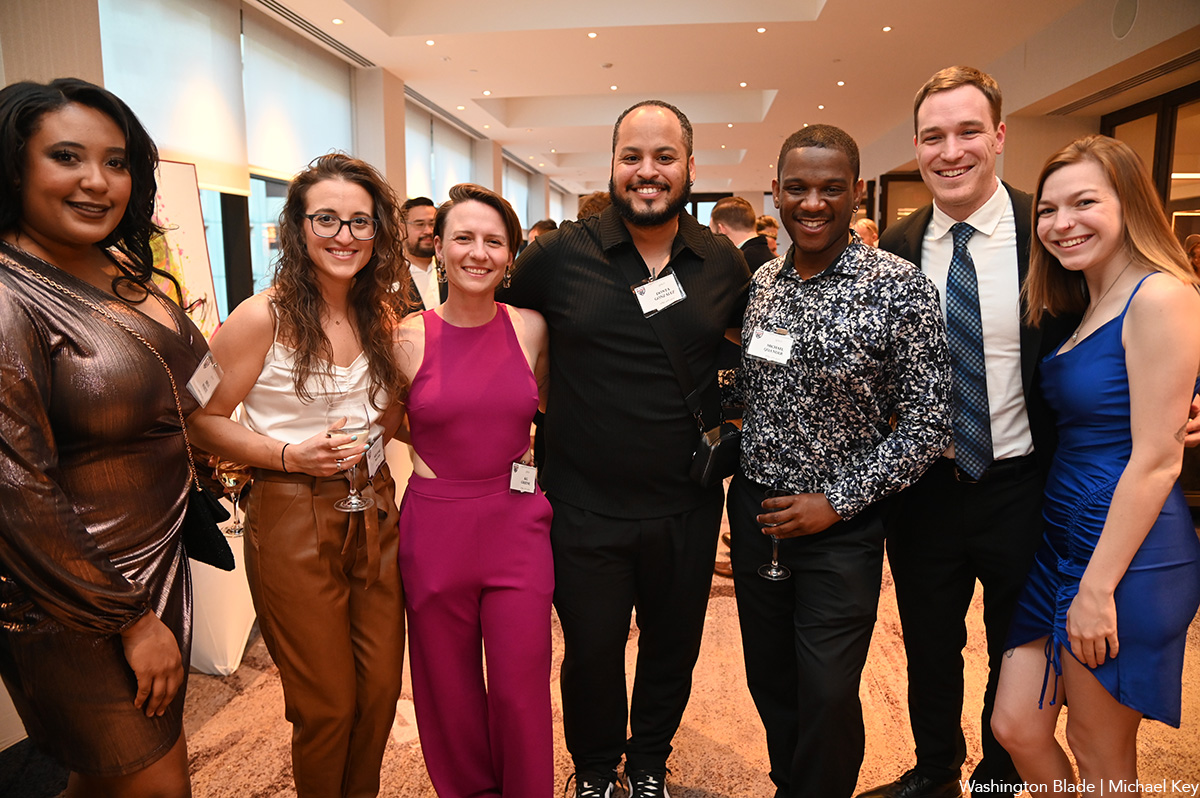
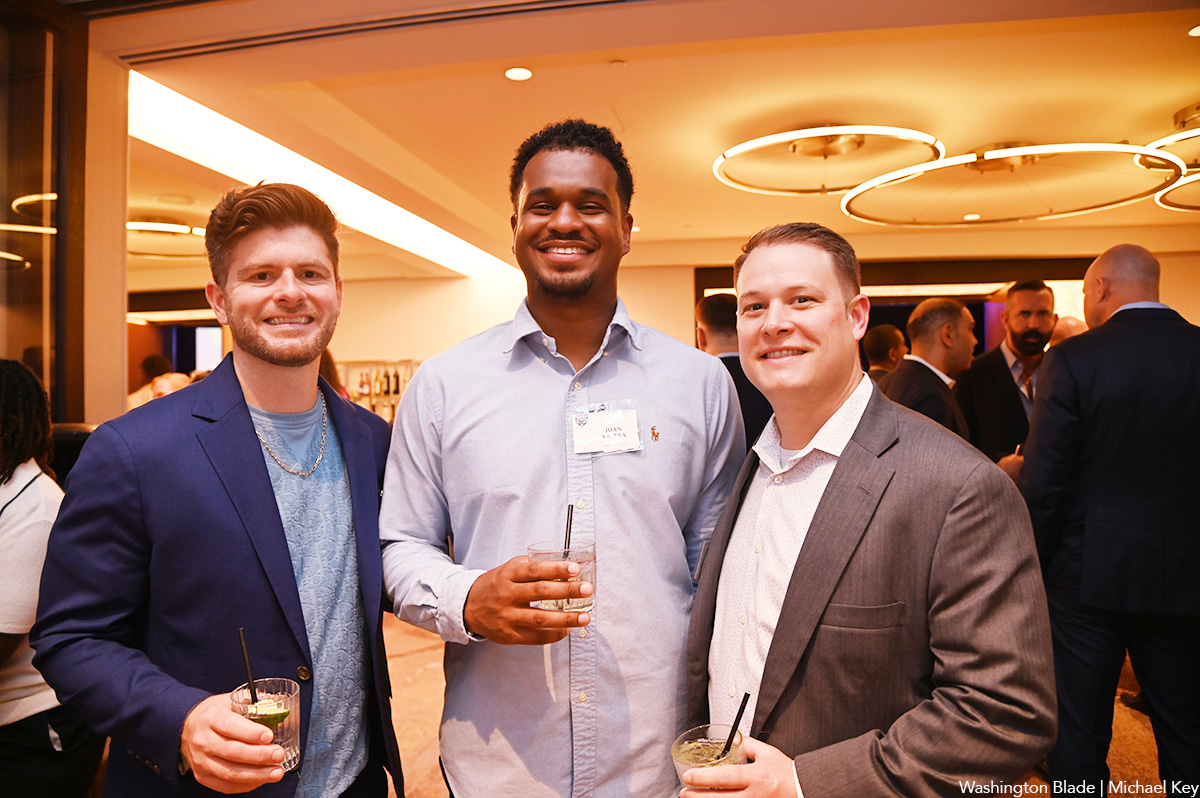
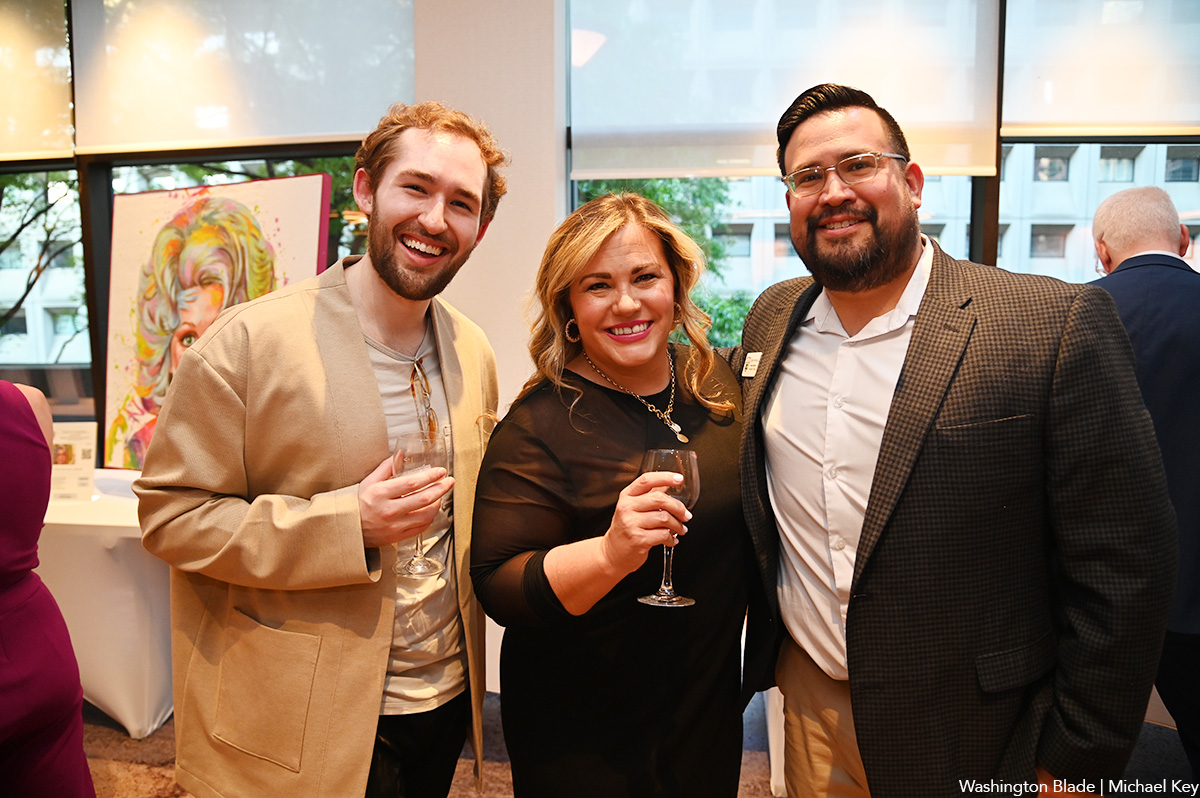
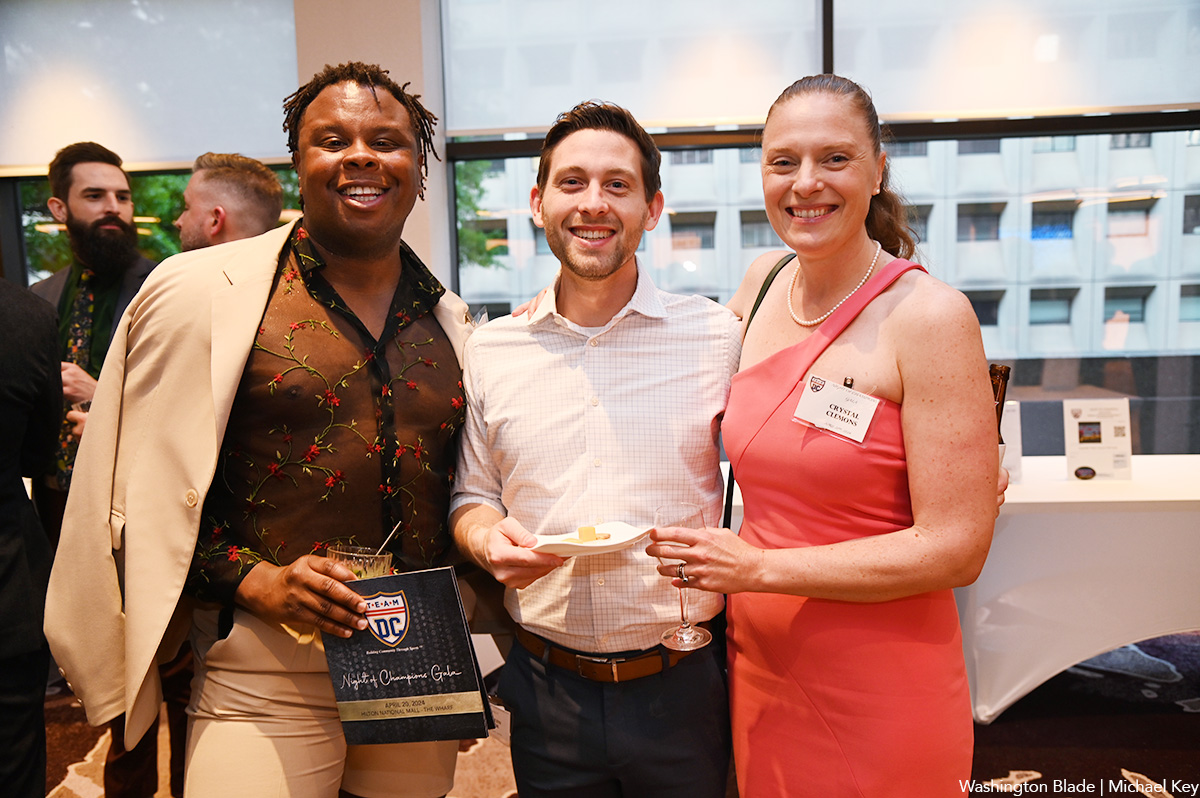
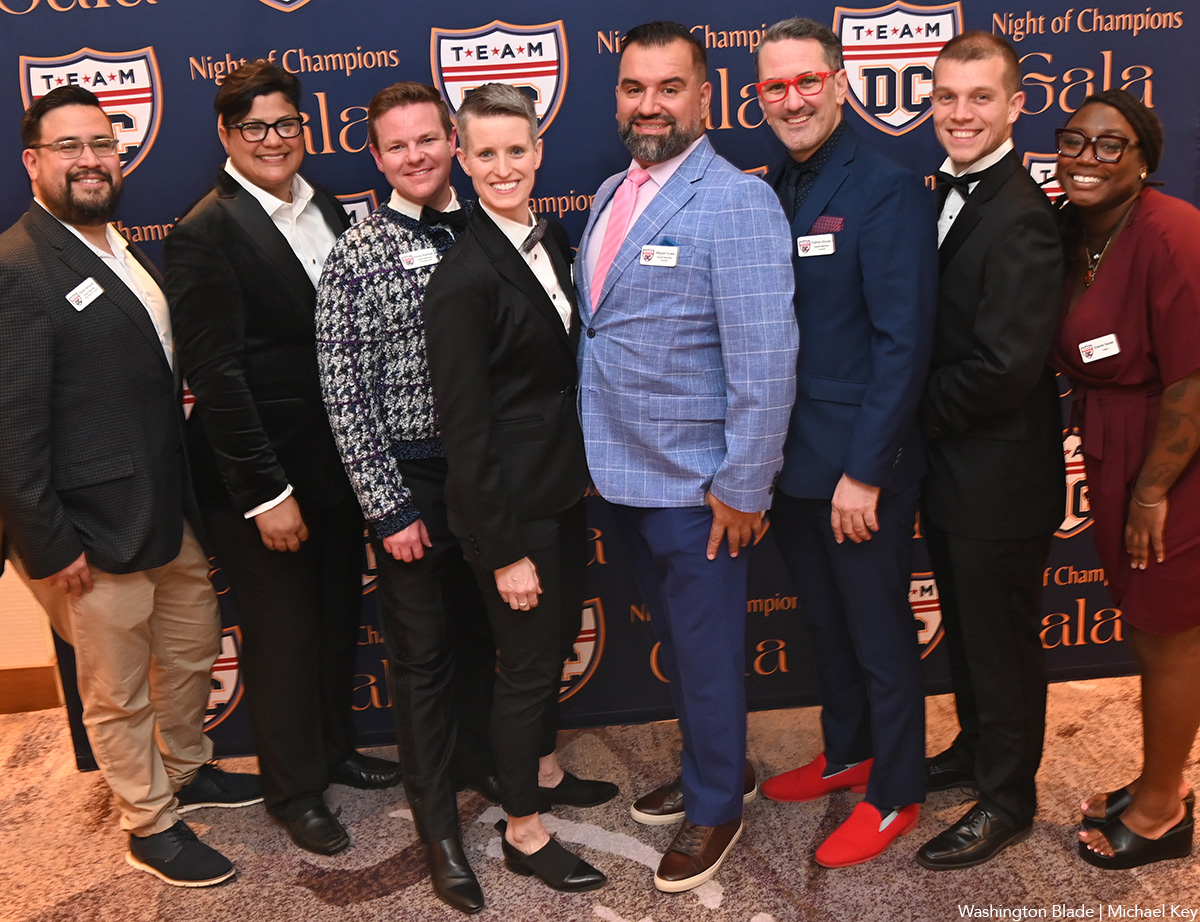

The 2024 National Cannabis Festival was held at the Fields at RFK Stadium on April 19-20.
(Washington Blade photos by Michael Key)
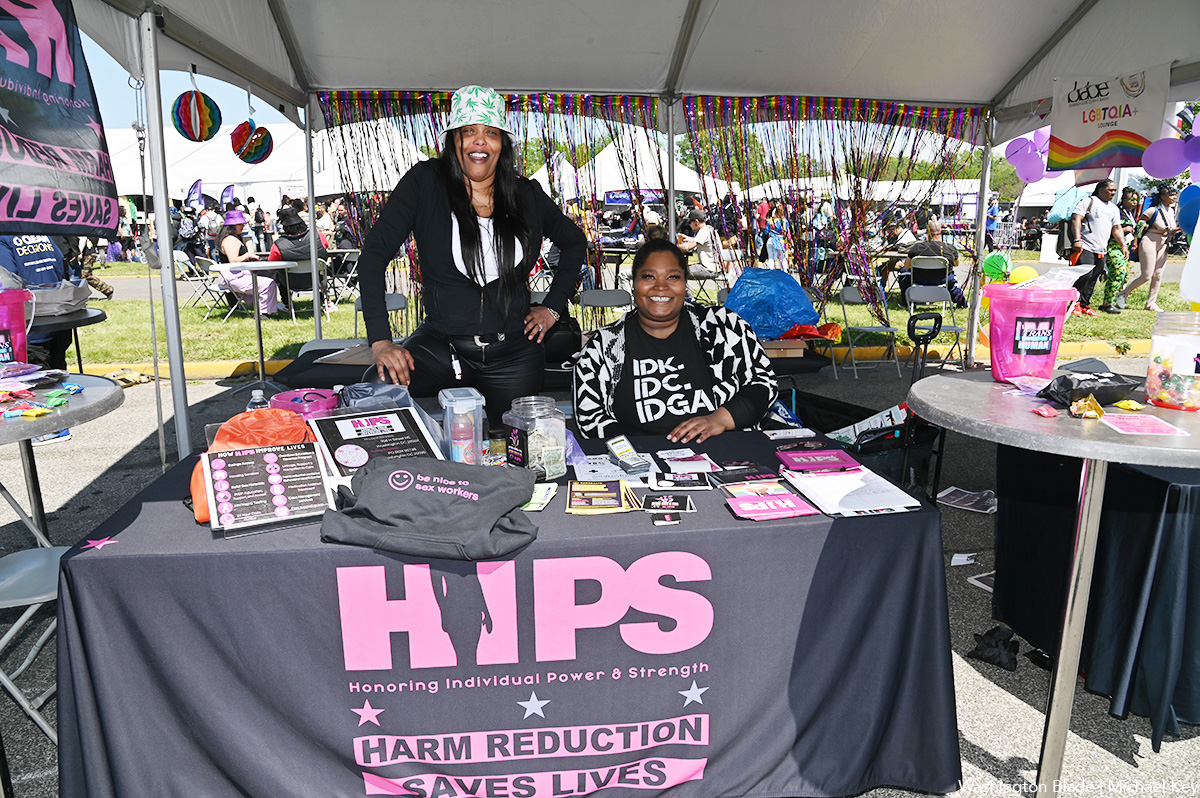
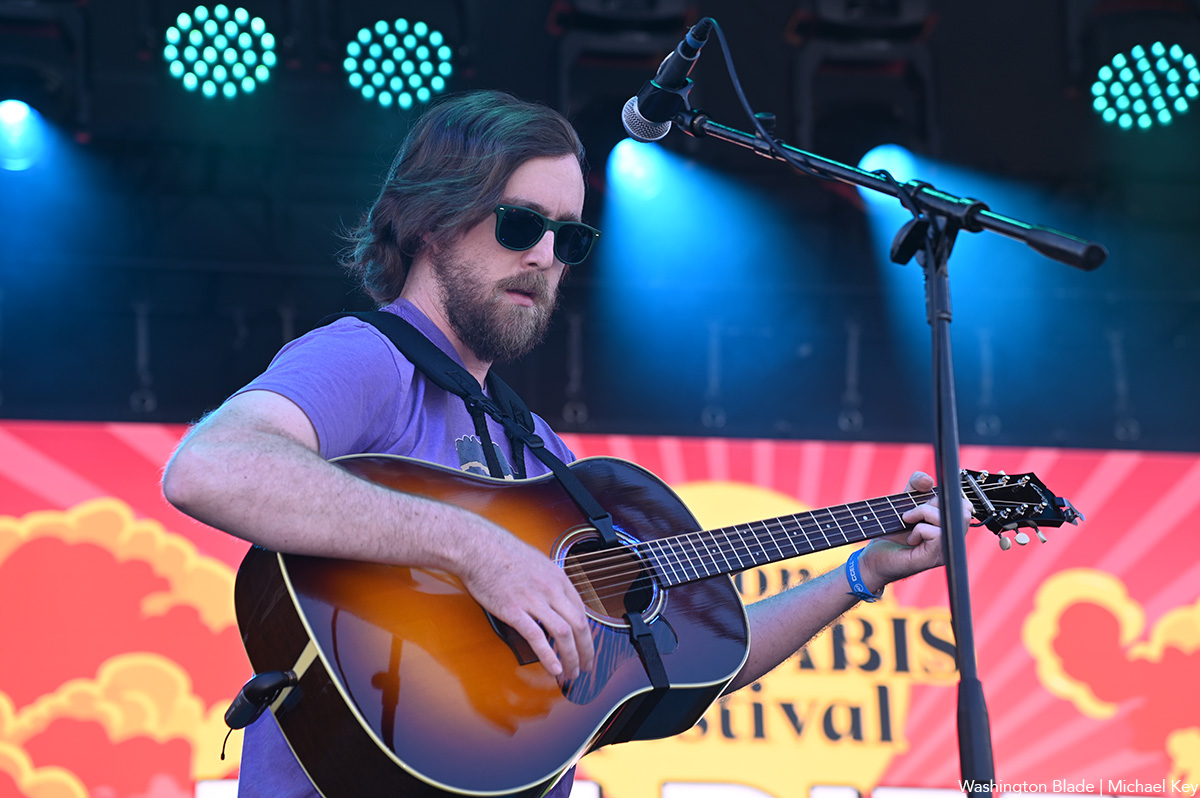
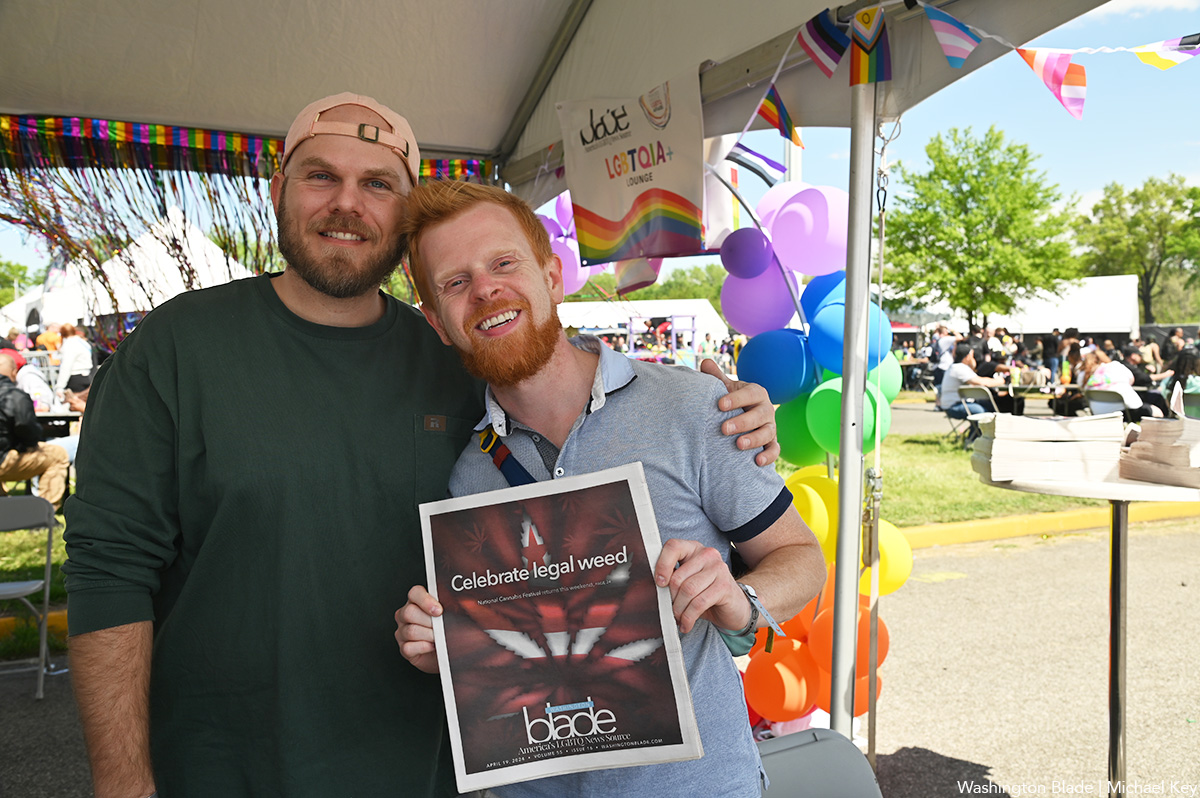
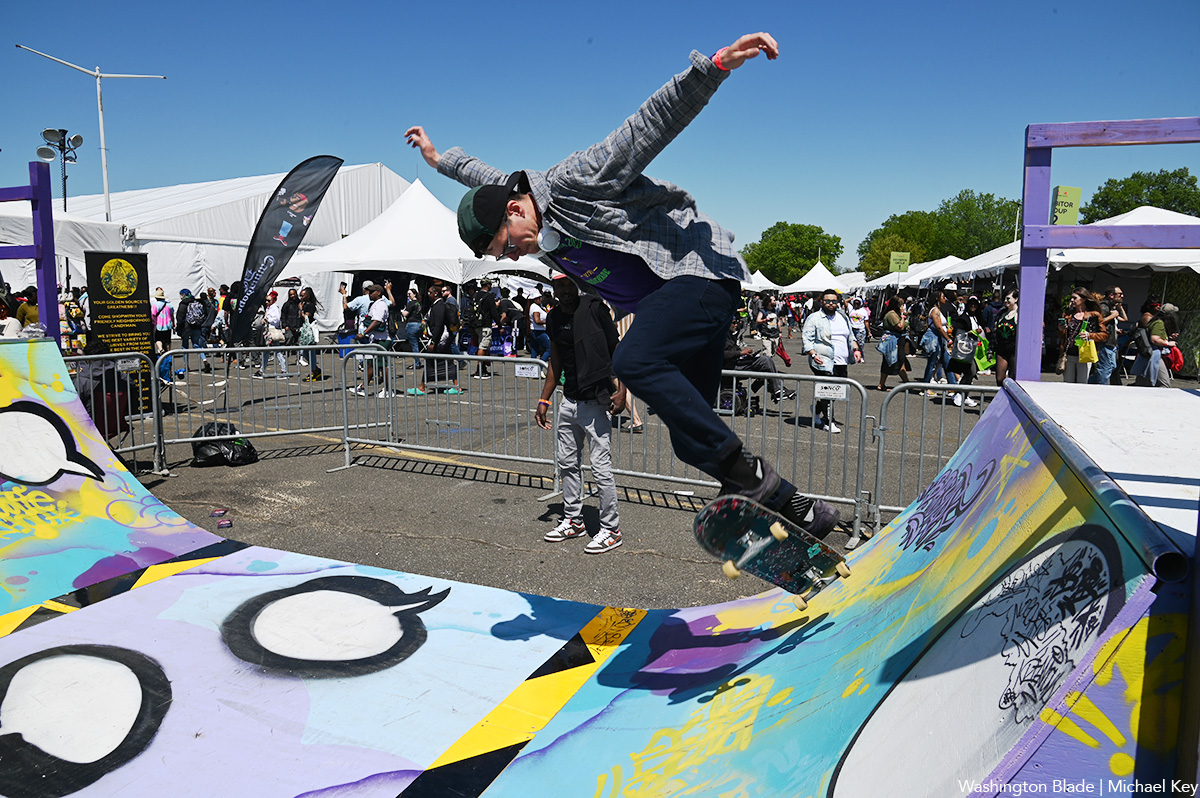
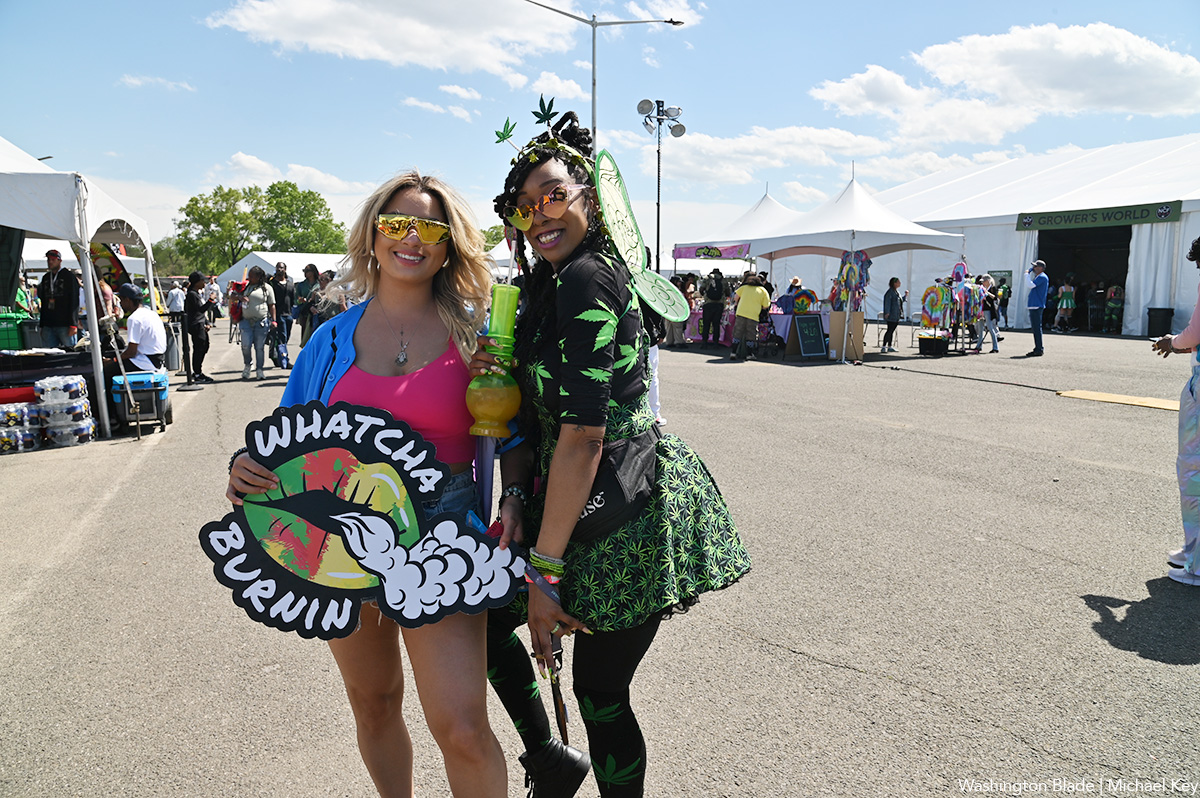
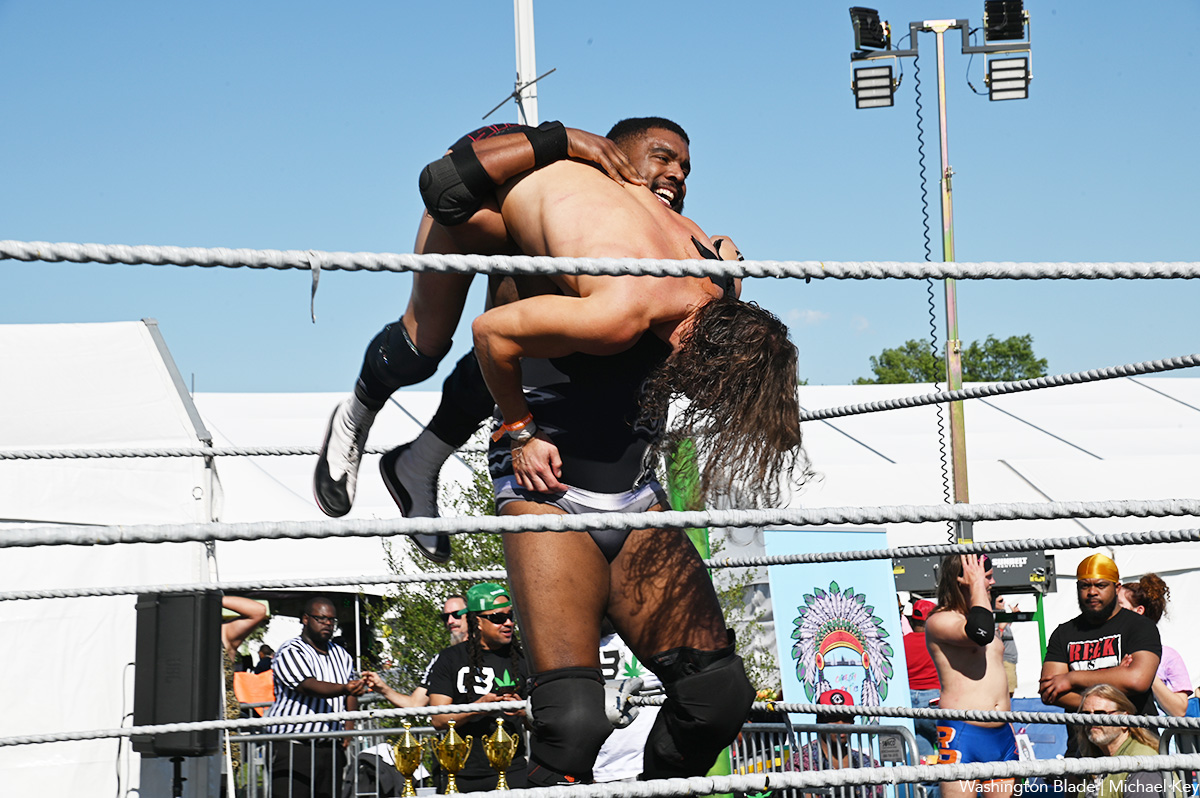
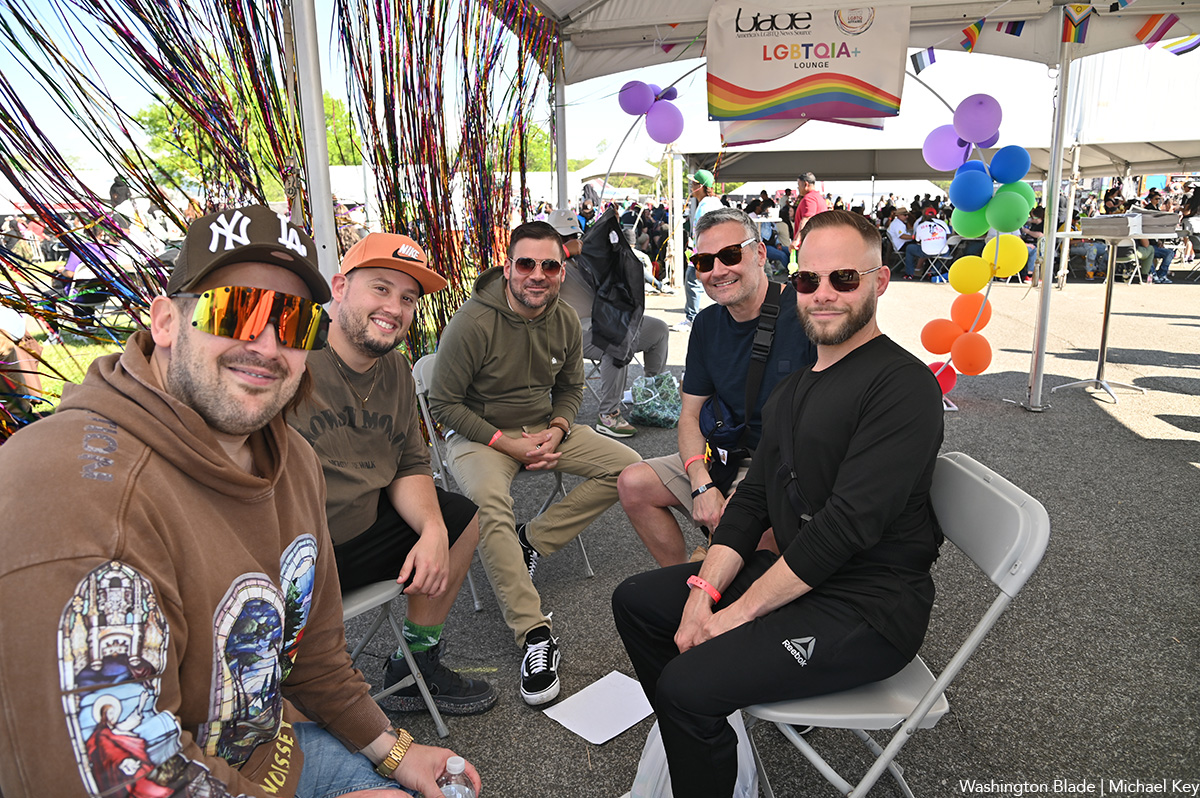
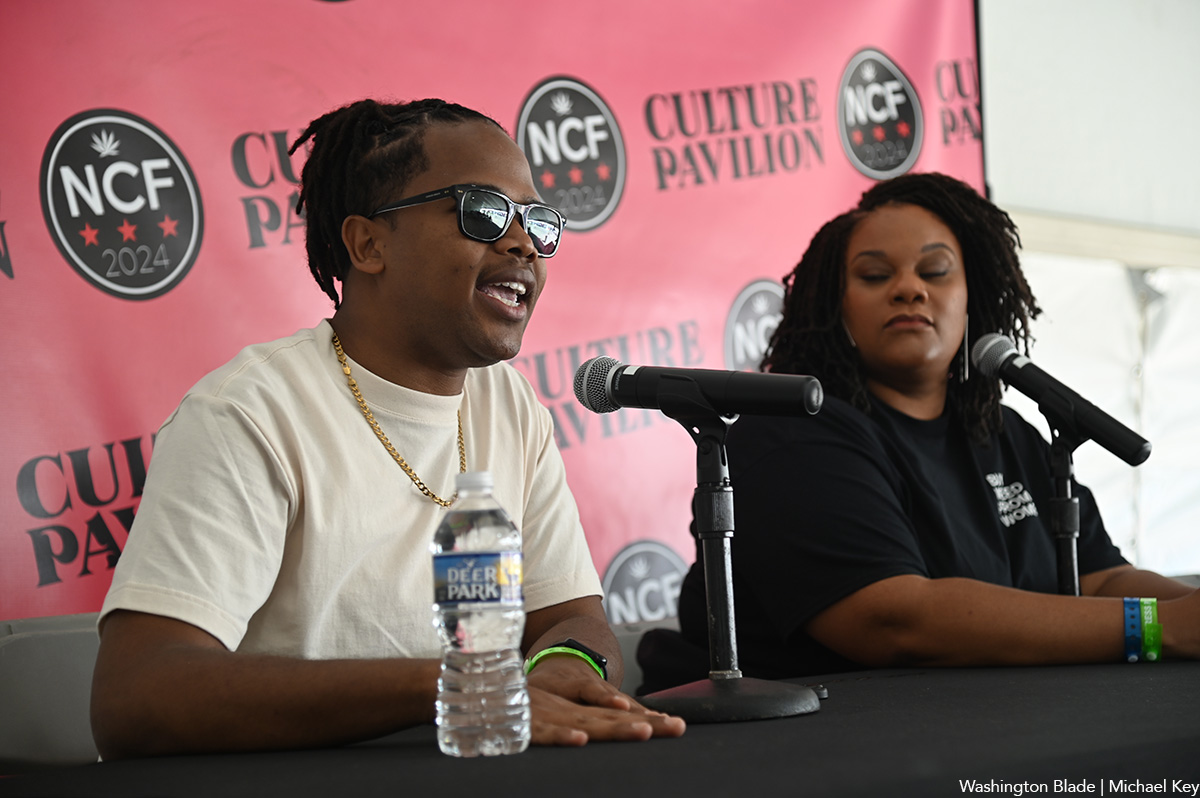
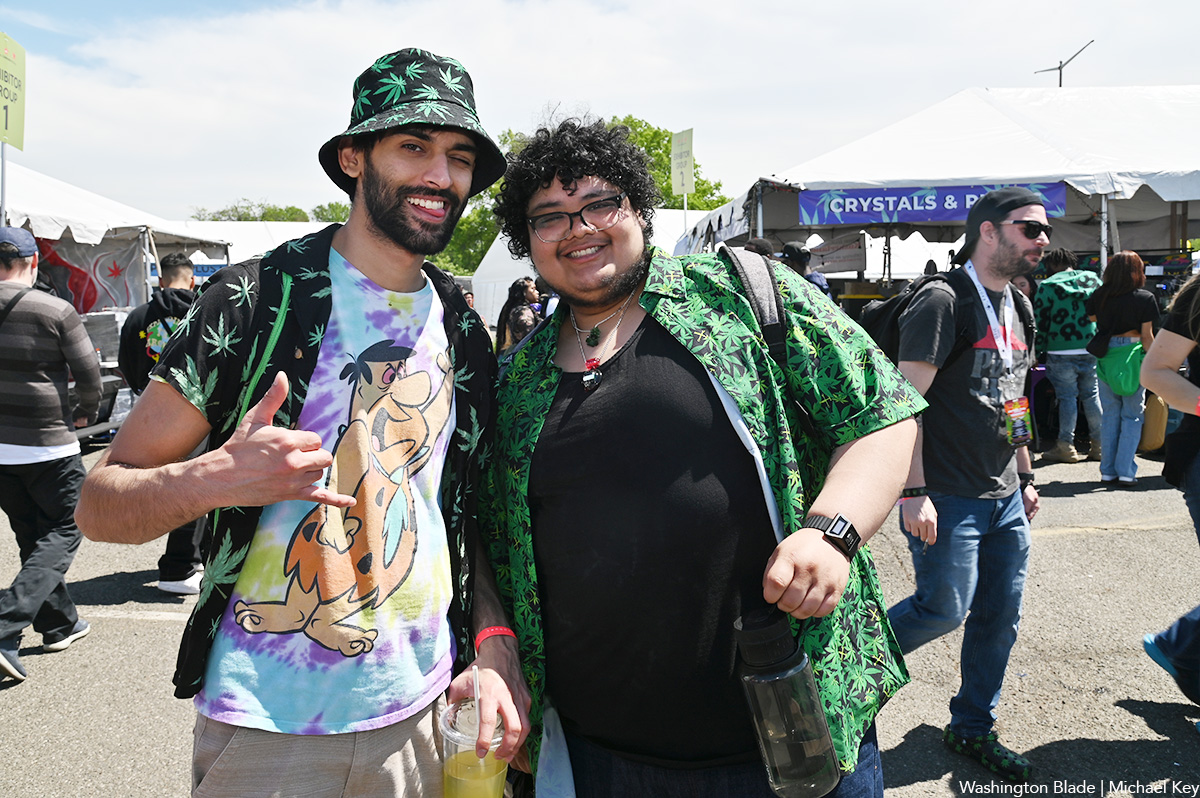
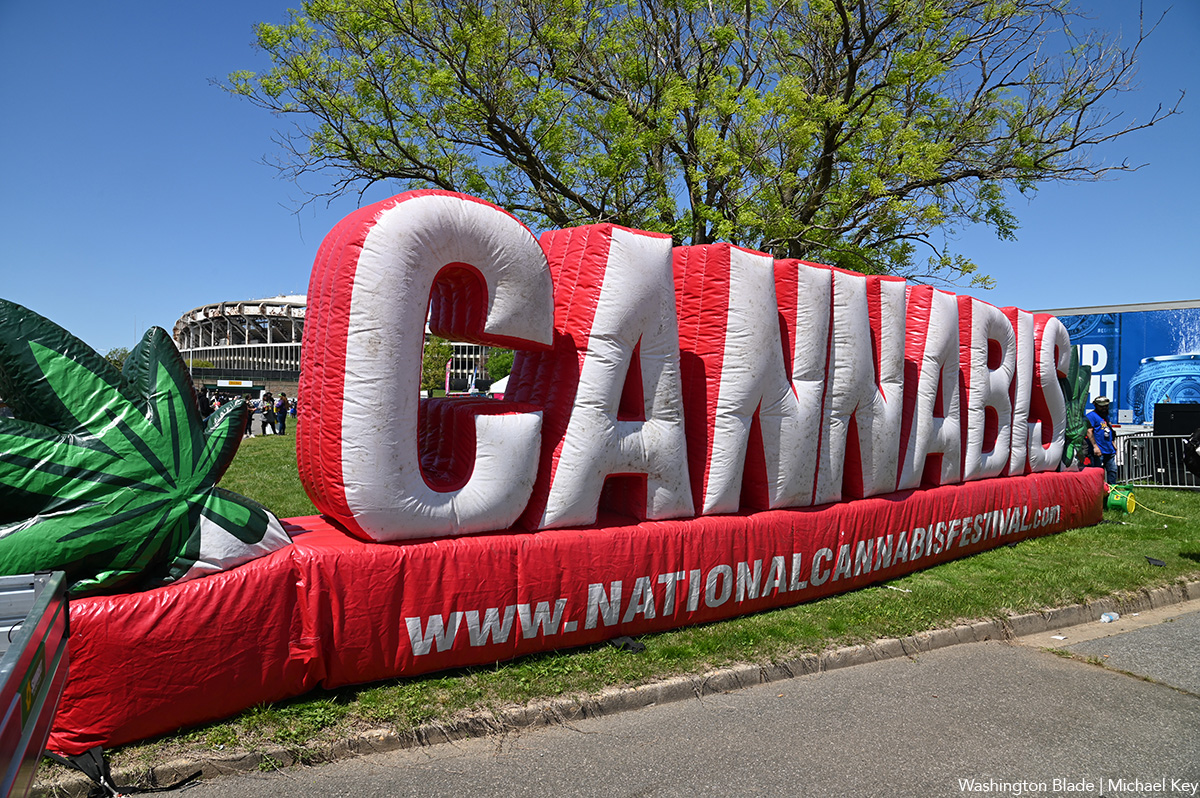
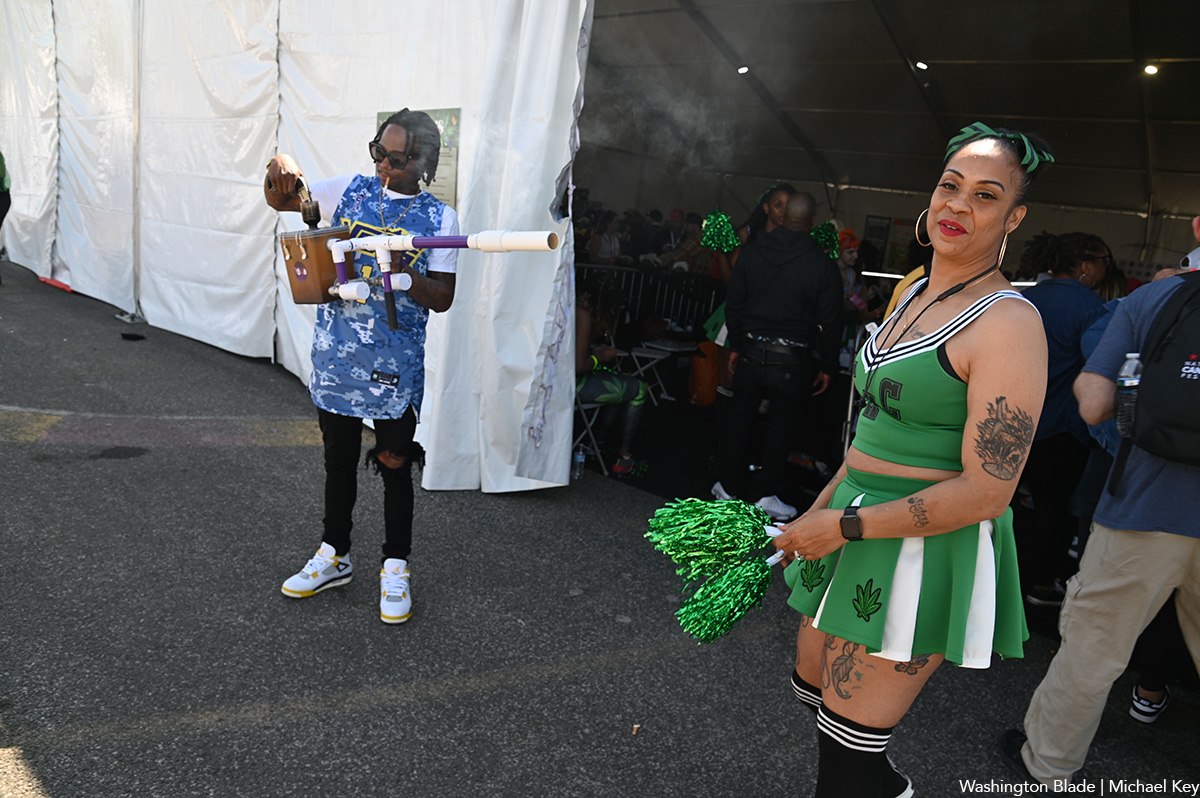

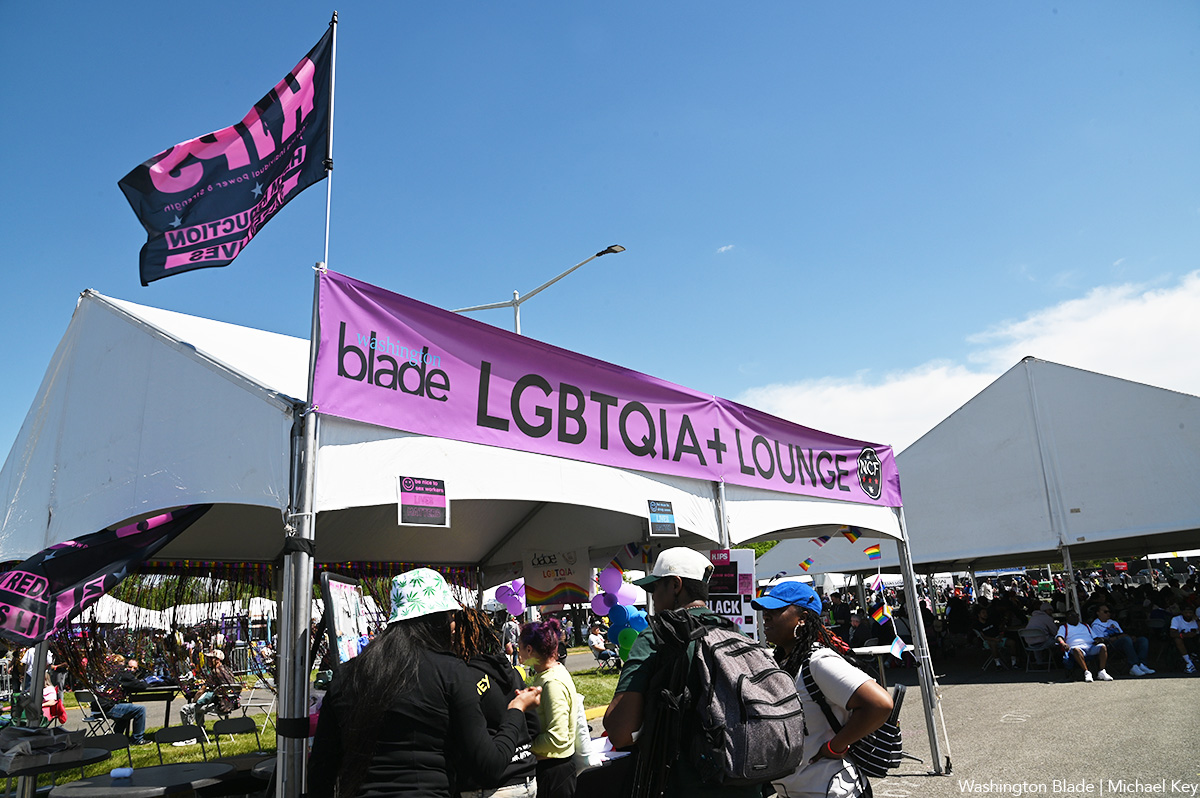
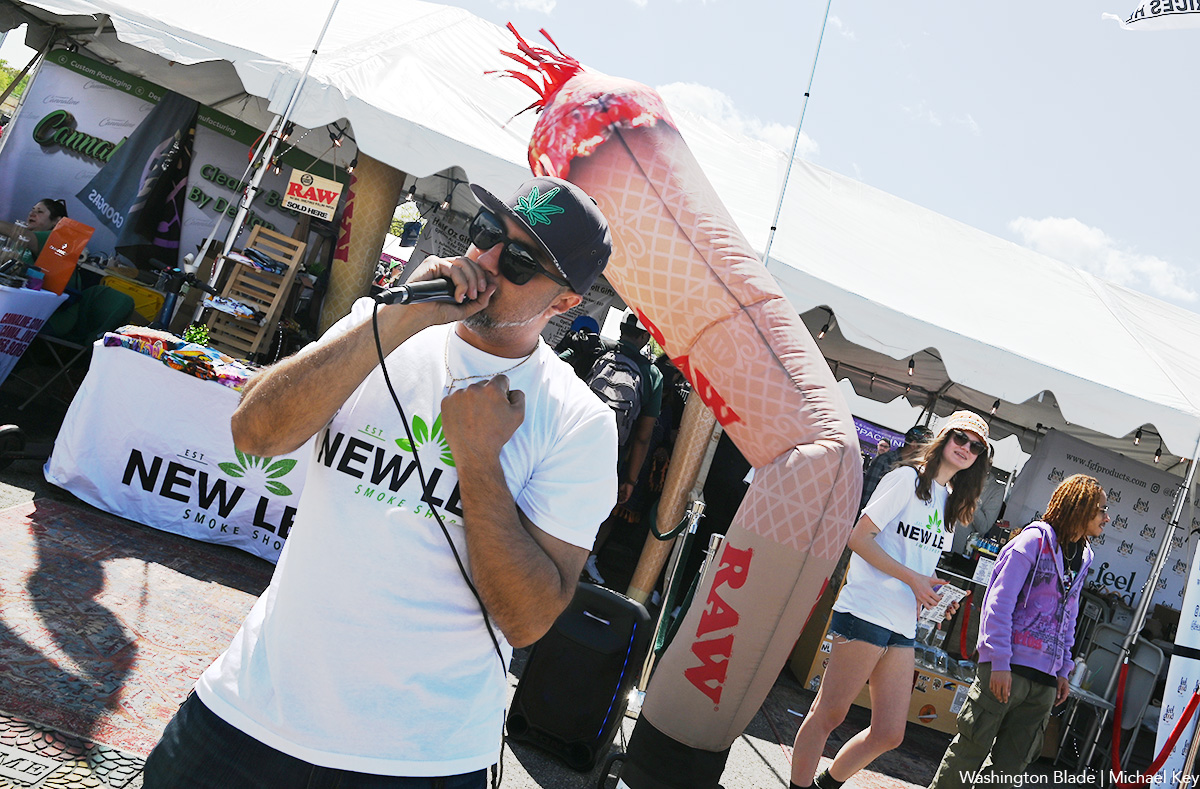
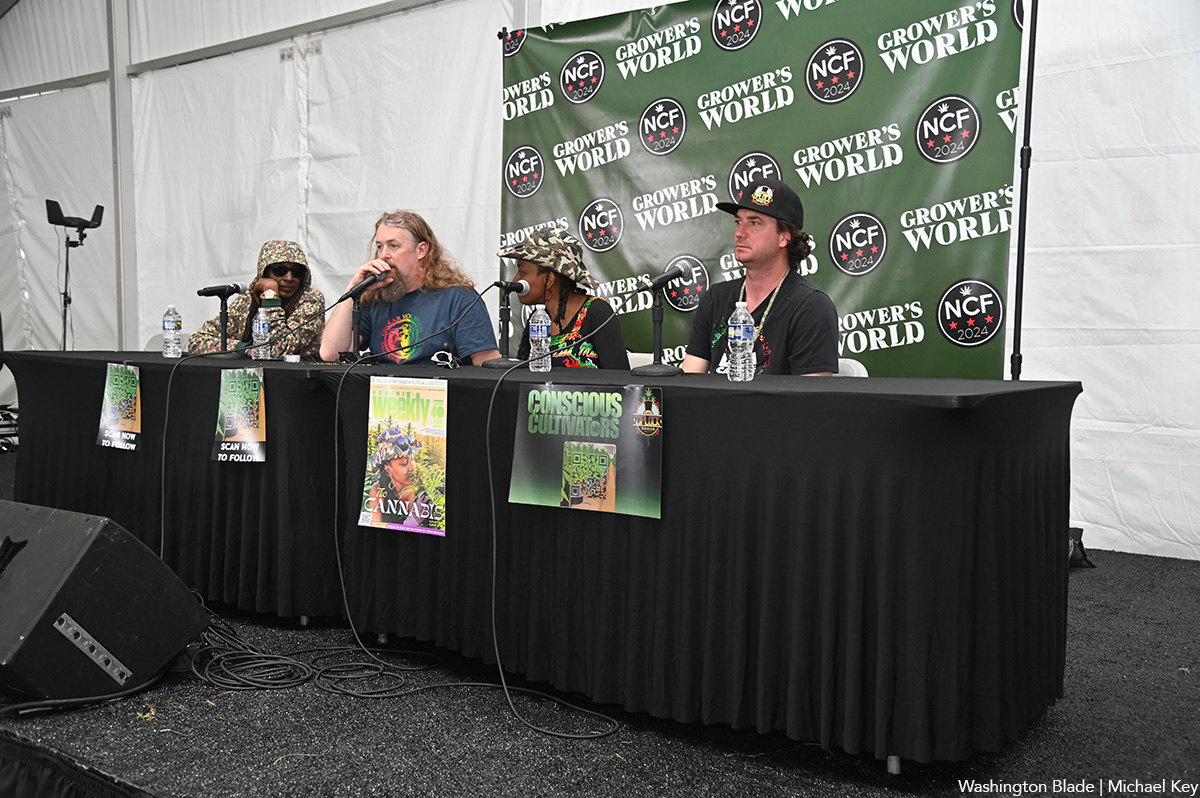
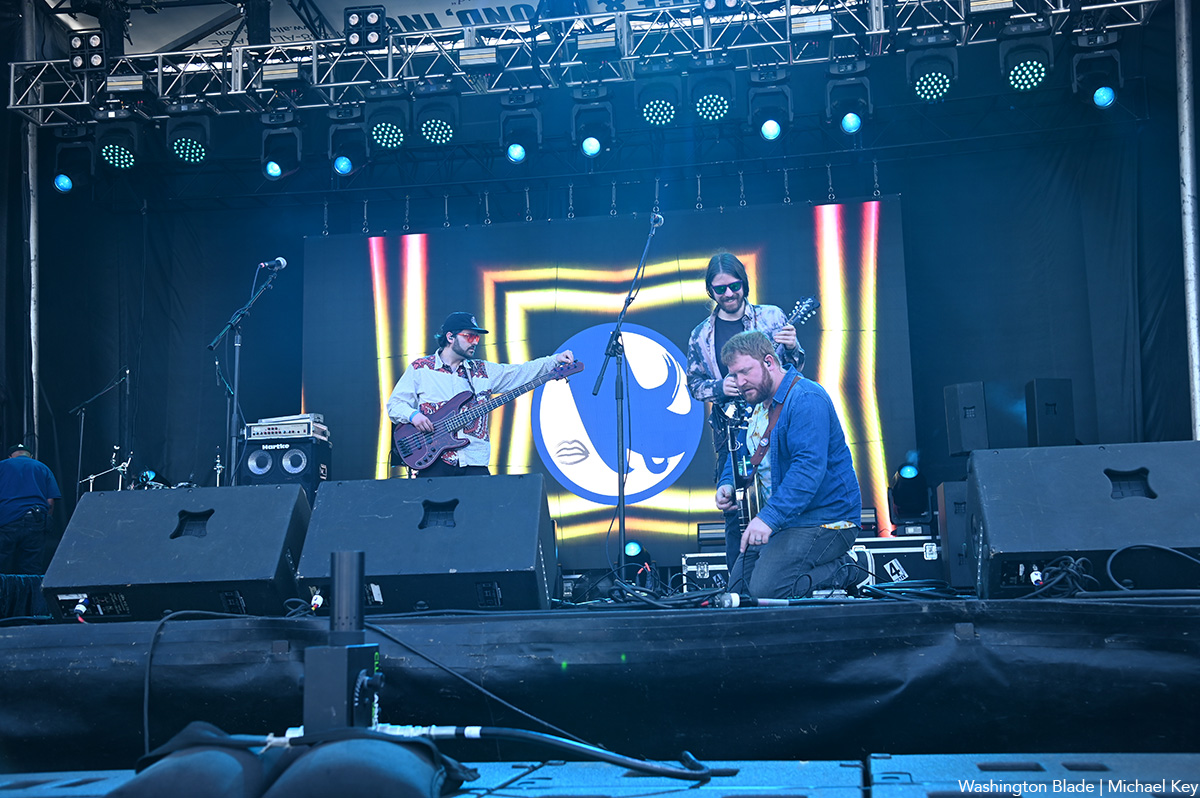
Covering the @NatlCannaFest at RFK Stadium for @WashBlade . Stop by the LGBTQ+ booth and pick up a paper if you are here. pic.twitter.com/is7hnsaPns
— Michael Patrick Key (@MichaelKeyWB) April 20, 2024
Theater
‘Amm(i)gone’ explores family, queerness, and faith
A ‘fully autobiographical’ work from out artist Adil Mansoor
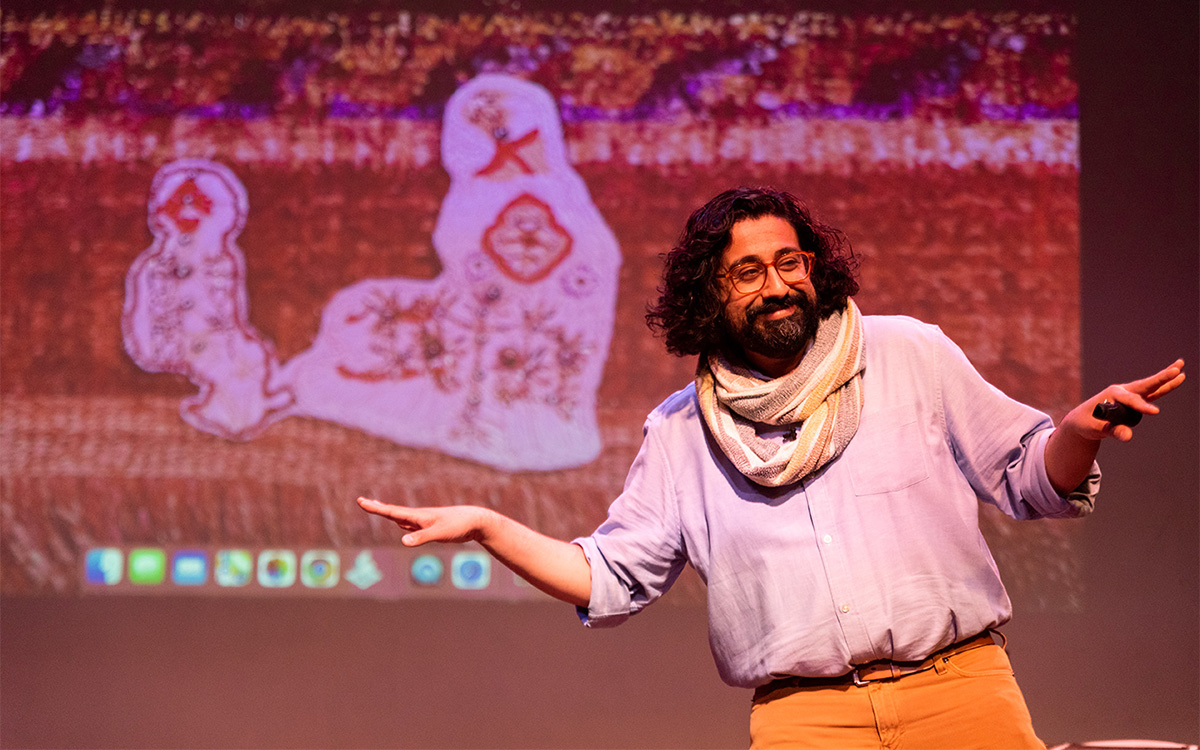
‘Amm(i)gone’
Thorough May 12
Woolly Mammoth Theatre
641 D St., N.W.
$60-$70
Woollymammoth.net
“Fully and utterly autobiographical.” That’s how Adil Mansoor describes “Amm(i)gone,” his one-man work currently playing at Woolly Mammoth Theatre.
Both created and performed by out artist Mansoor, it’s his story about inviting his Pakistani mother to translate Sophocles’s Greek tragedy “Antigone” into Urdu. Throughout the journey, there’s an exploration of family, queerness, and faith,as well as references to teachings from the Quran, and audio conversations with his Muslim mother.
Mansoor, 38, grew up in the suburbs of Chicago and is now based in Pittsburgh where he’s a busy theater maker. He’s also the founding member of Pittsburgh’s Hatch Arts Collective and the former artistic director of Dreams of Hope, an LGBTQ youth arts organization.
WASHINGTON BLADE: What spurred you to create “Amm(i)gone”?
ADIL MANSOOR: I was reading a translation of “Antigone” a few years back and found myself emotionally overwhelmed. A Theban princess buries her brother knowing it will cost her, her own life. It’s about a person for whom all aspirations are in the afterlife. And what does that do to the living when all of your hopes and dreams have to be reserved for the afterlife?
I found grant funding to pay my mom to do the translation. I wanted to engage in learning. I wanted to share theater but especially this ancient tragedy. My mother appreciated the characters were struggling between loving one another and their beliefs.
BLADE: Are you more director than actor?
MANSOOR: I’m primarily a director with an MFA in directing from Carnegie Mellon. I wrote, directed, and performed in this show, and had been working on it for four years. I’ve done different versions including Zoom. Woolly’s is a new production with the same team who’ve been involved since the beginning.
I love solo performance. I’ve produced and now teach solo performance and believe in its power. And I definitely lean toward “performance” and I haven’t “acted” since I was in college. I feel good on stage. I was a tour guide and do a lot of public speaking. I enjoy the attention.
BLADE: Describe your mom.
MANSOOR: My mom is a wonderfully devout Muslim, single mother, social worker who discovered my queerness on Google. And she prays for me.
She and I are similar, the way we look at things, the way we laugh. But different too. And those are among the questions I ask in this show. Our relationship is both beautiful and complicated.
BLADE: So, you weren’t exactly hiding your sexuality?
MANSOOR: In my mid-20s, I took time to talk with friends about our being queer with relation to our careers. My sexuality is essential to the work. As the artistic director at Dreams of Hope, part of the work was to model what it means to be public. If I’m in a room with queer and trans teenagers, part of what I’m doing is modeling queer adulthood. The way they see me in the world is part of what I’m putting out there. And I want that to be expansive and full.
So much of my work involves fundraising and being a face in schools. Being out is about making safe space for queer young folks.
BLADE: Have you encountered much Islamophobia?
MANSOOR: When 9/11 happened, I was a sophomore in high school, so yes. I faced a lot then and now. I’ve been egged on the street in the last four months. I see it in the classroom. It shows up in all sorts of ways.
BLADE: What prompted you to lead your creative life in Pittsburgh?
MANSOOR: I’ve been here for 14 years. I breathe with ease in Pittsburgh. The hills and the valleys and the rust of the city do something to me. It’s beautiful, it’ affordable, and there is support for local artists. There’s a lot of opportunity.
Still, the plan was to move to New York in September of 2020 but that was cancelled. Then the pandemic showed me that I could live in Pittsburgh and still have a nationally viable career.
BLADE: What are you trying to achieve with “Amm(i)gone”?
MANSOOR: What I’m sharing in the show is so very specific but I hear people from other backgrounds say I totally see my mom in that. My partner is Catholic and we share so much in relation to this.
I hope the work is embracing the fullness of queerness and how means so many things. And I hope the show makes audiences want to call their parents or squeeze their partners.
-

 District of Columbia4 days ago
District of Columbia4 days agoNew D.C. LGBTQ+ bar Crush set to open April 19
-

 District of Columbia5 days ago
District of Columbia5 days agoReenactment of first gay rights picket at White House draws interest of tourists
-

 Arizona5 days ago
Arizona5 days agoAriz. governor vetoes anti-transgender, Ten Commandments bill
-

 South America3 days ago
South America3 days agoDaniel Zamudio murderer’s parole request denied






